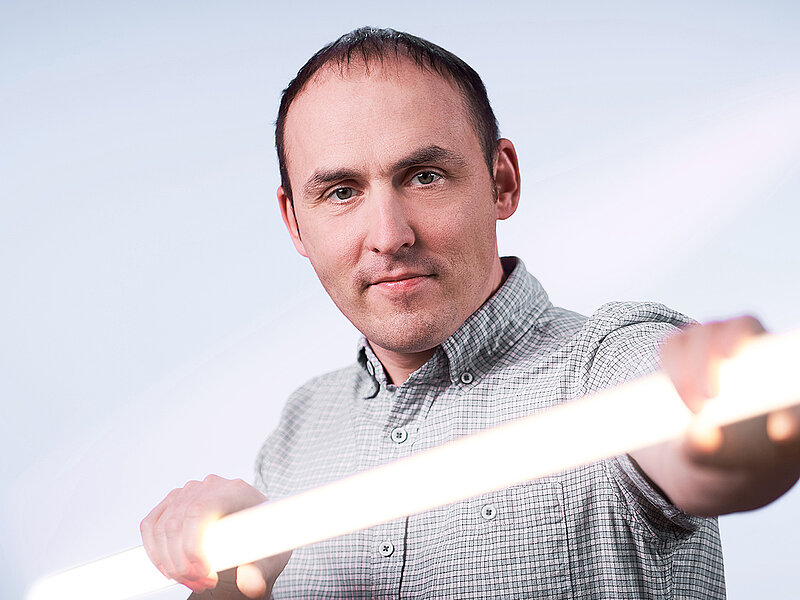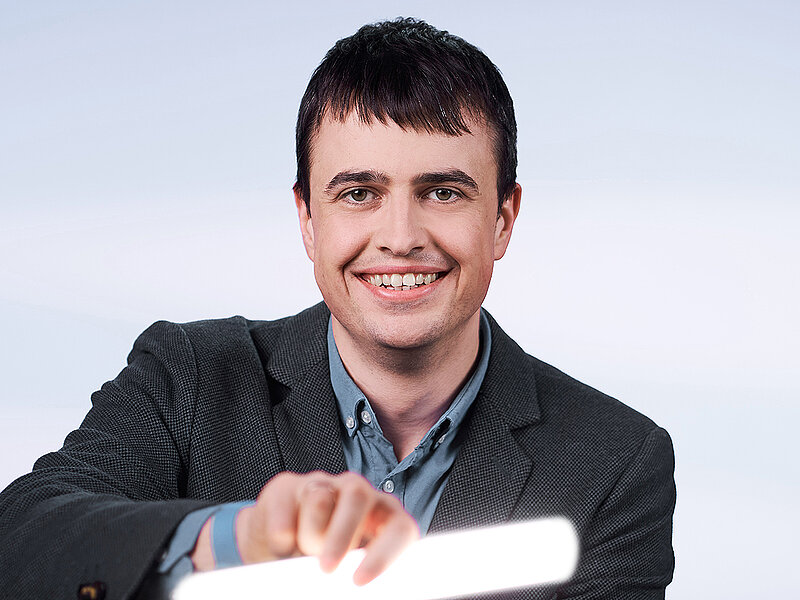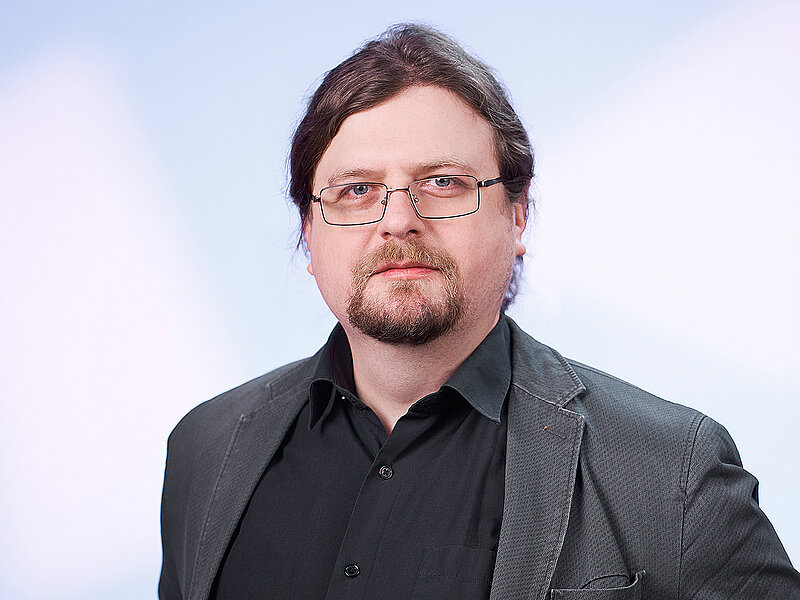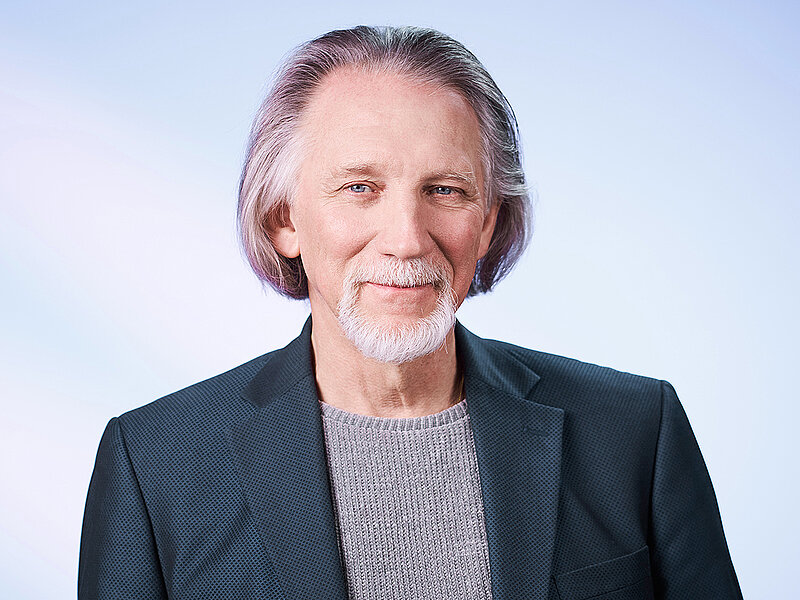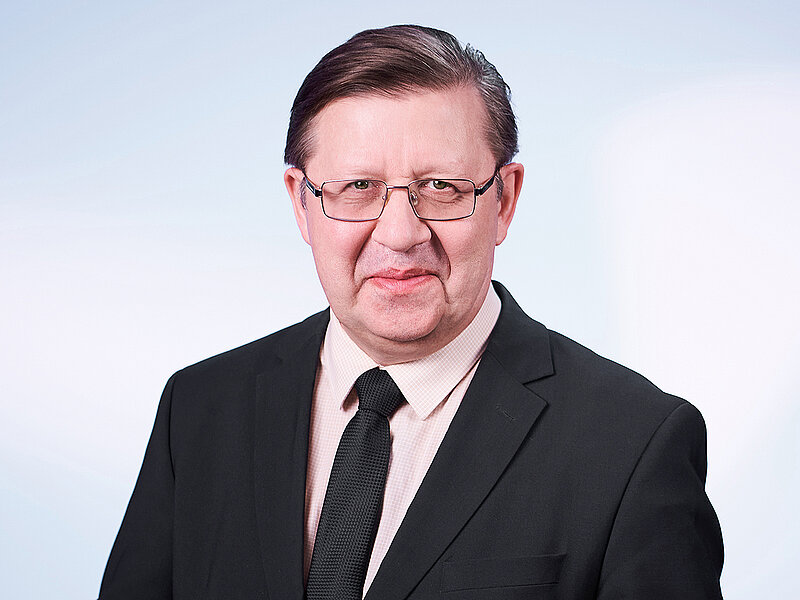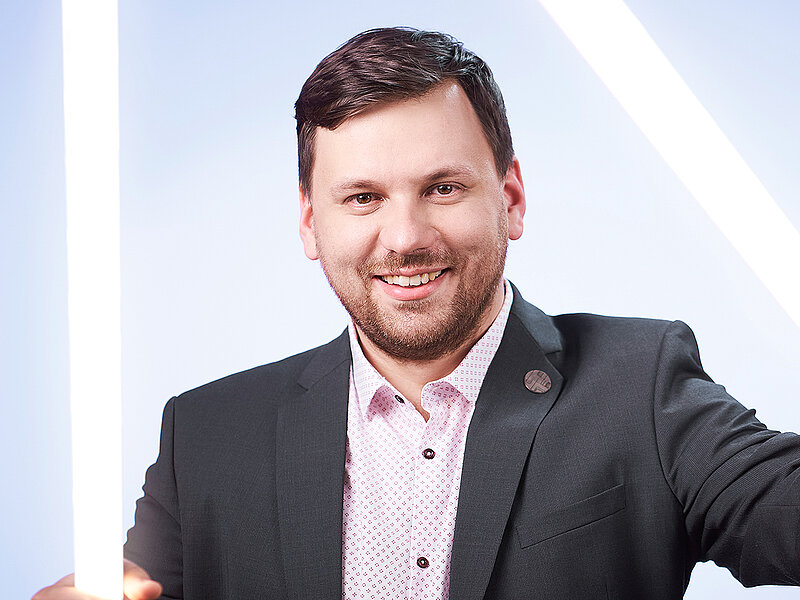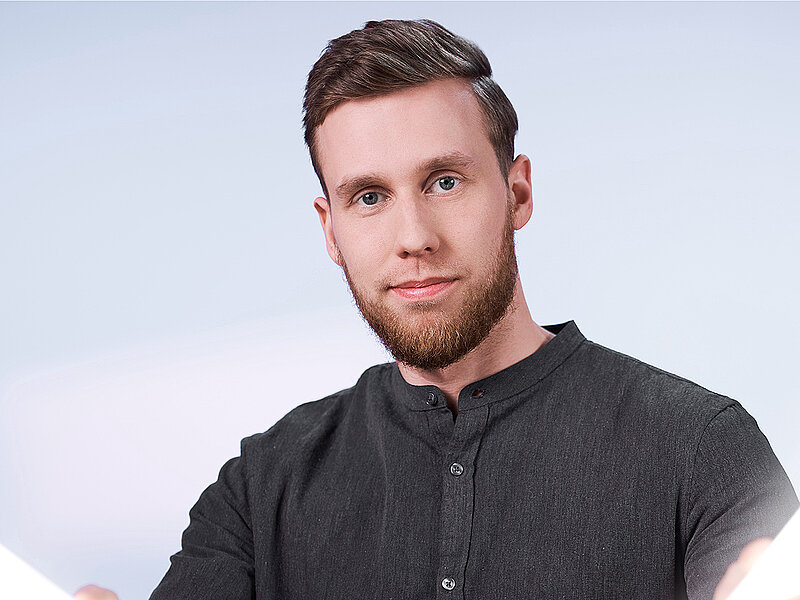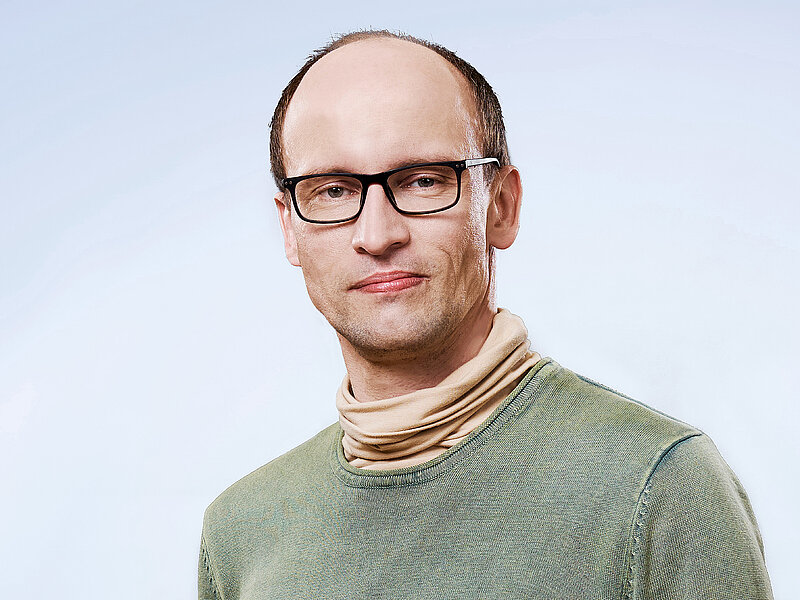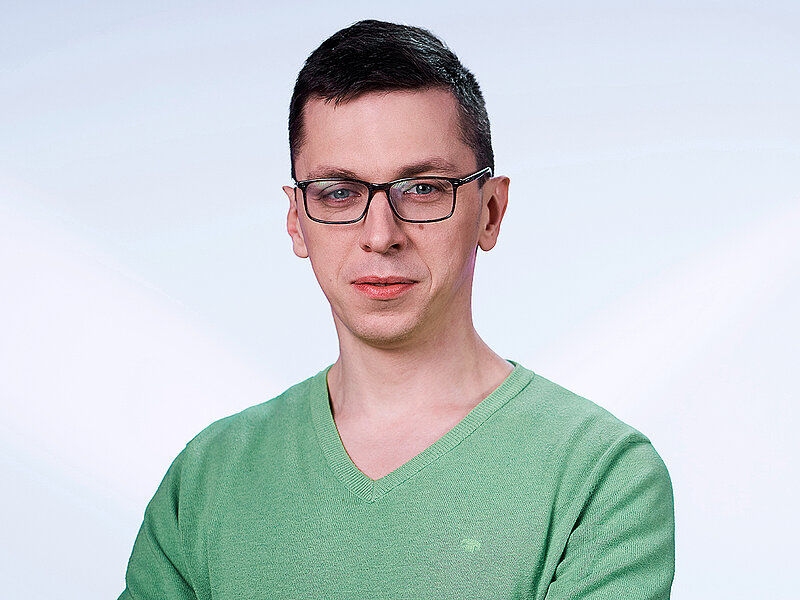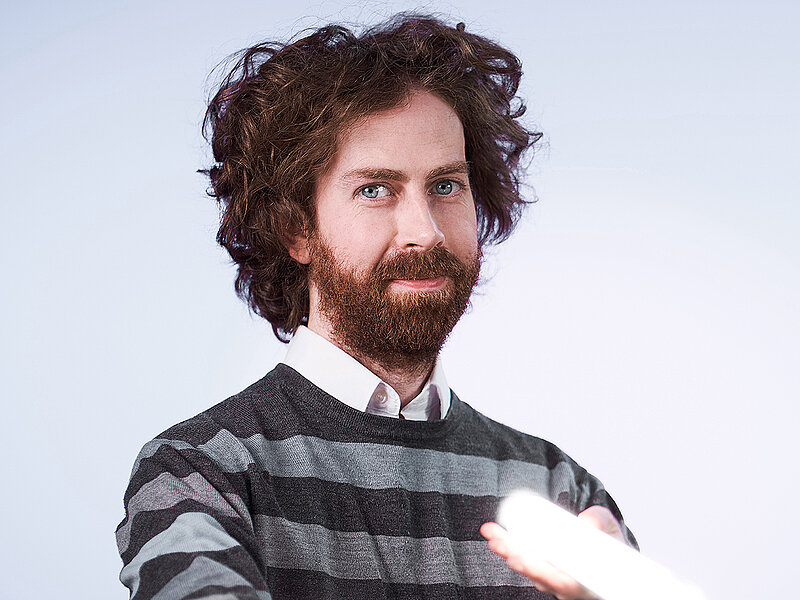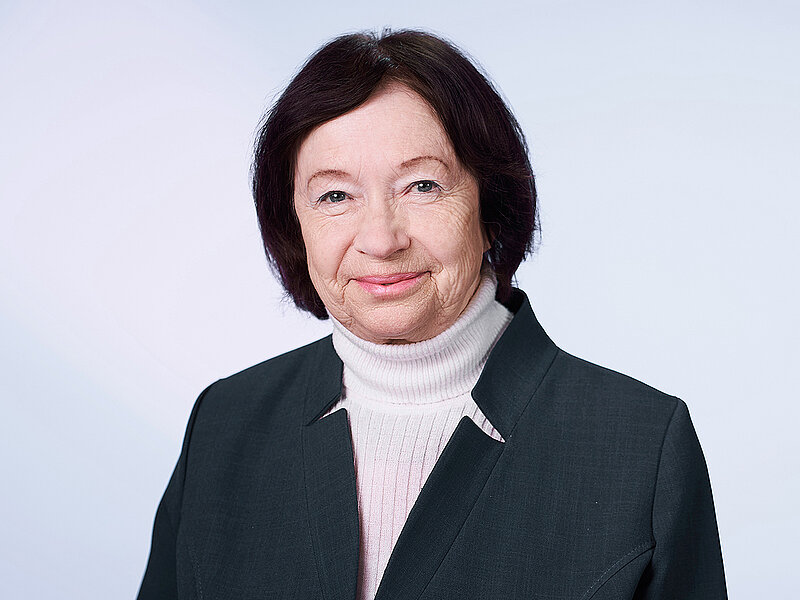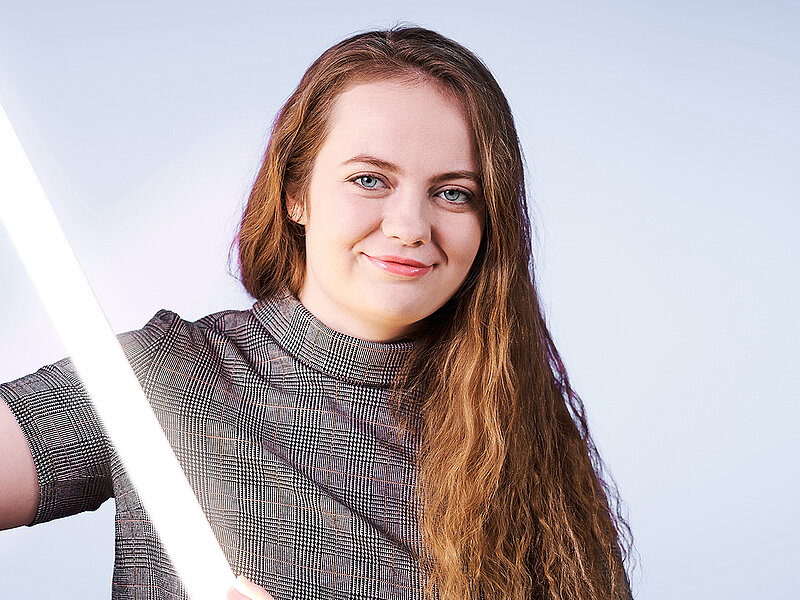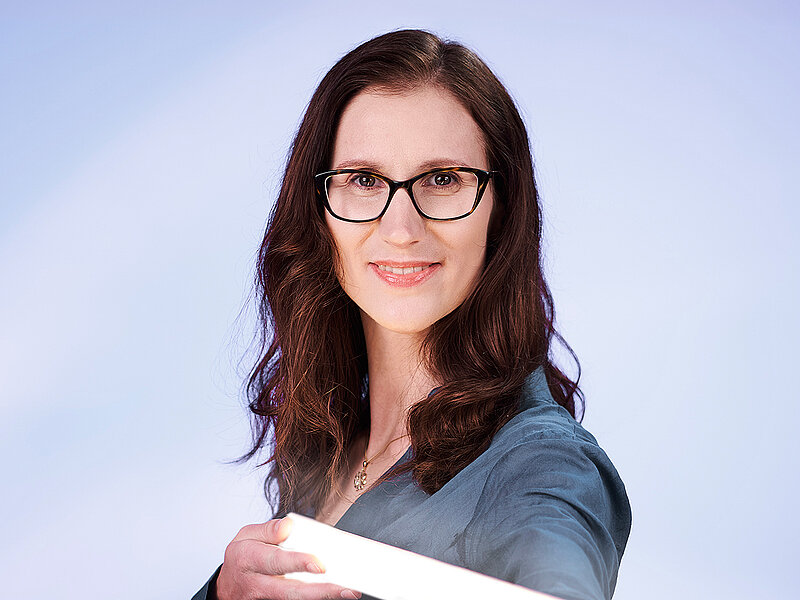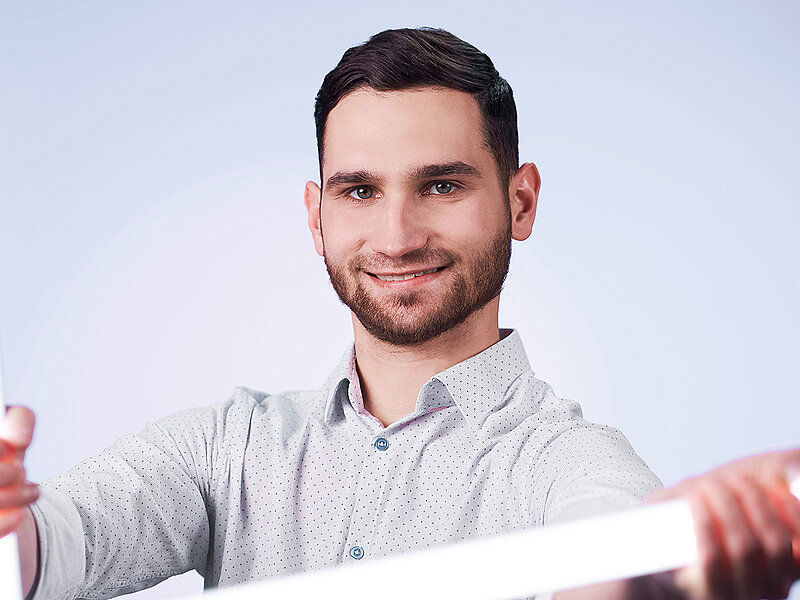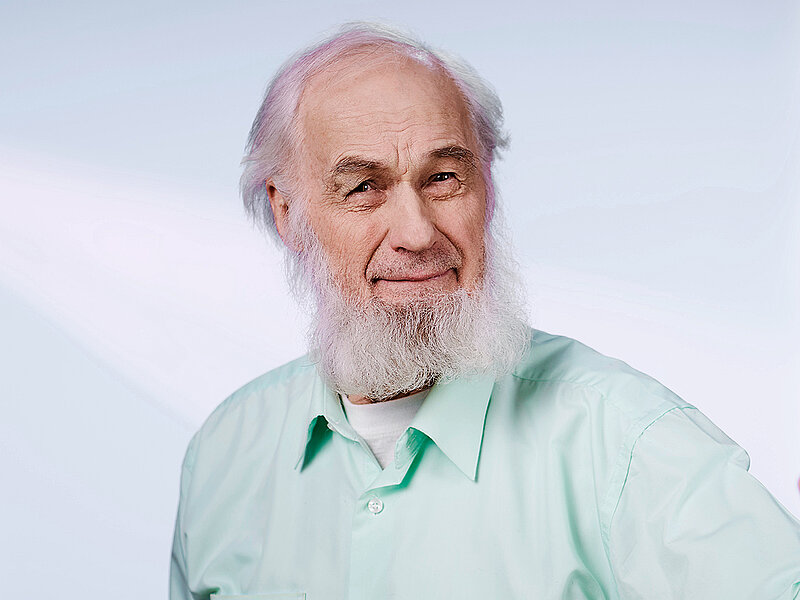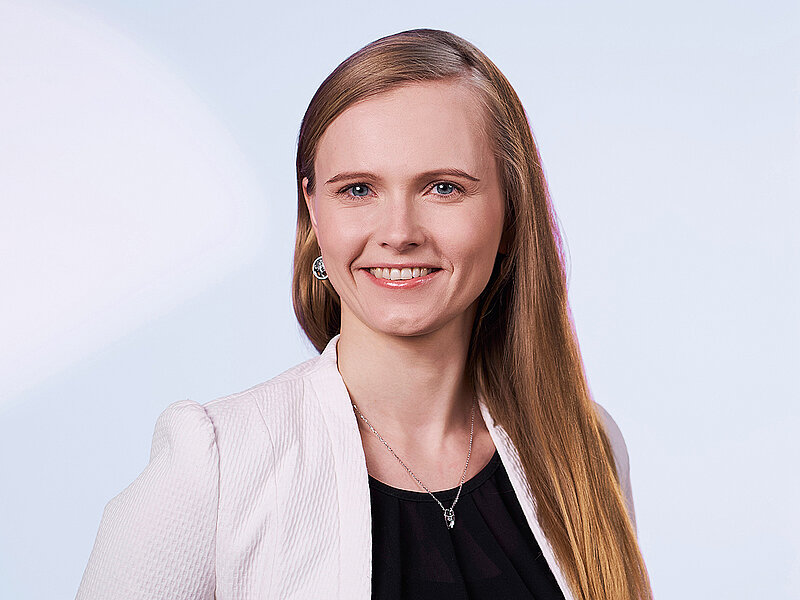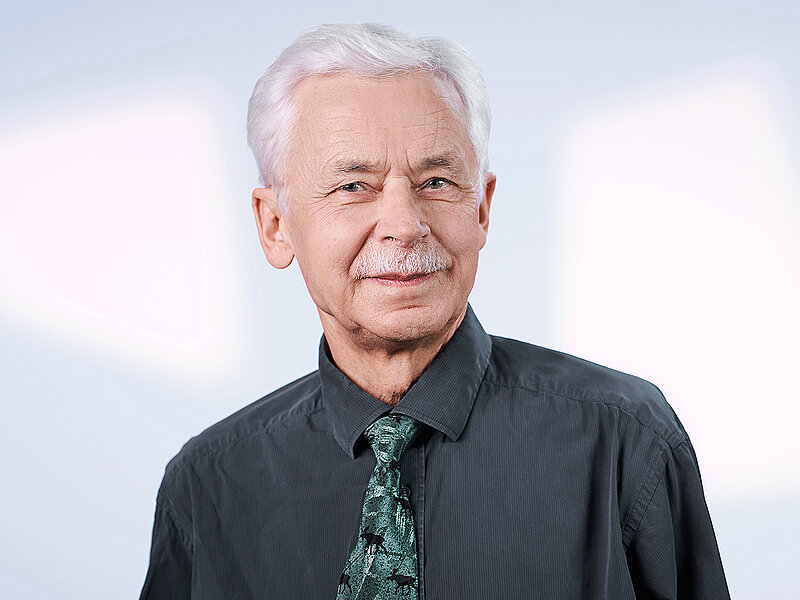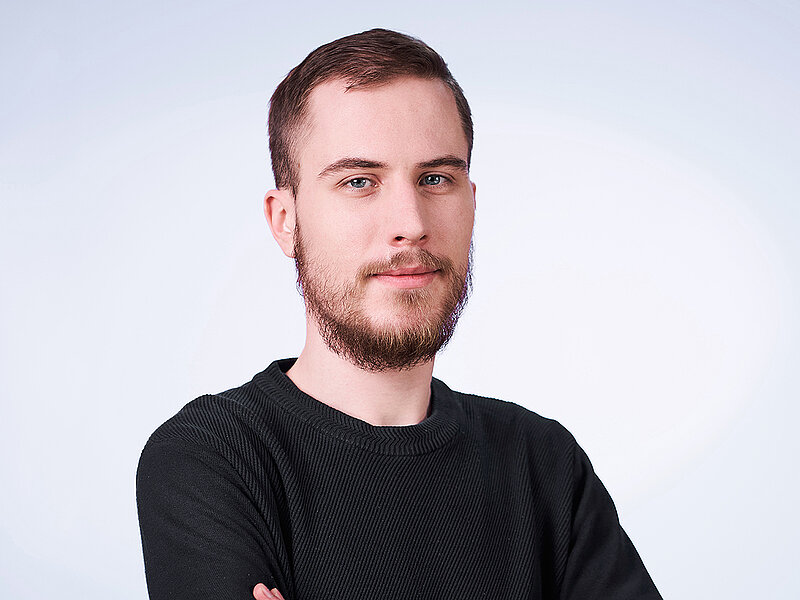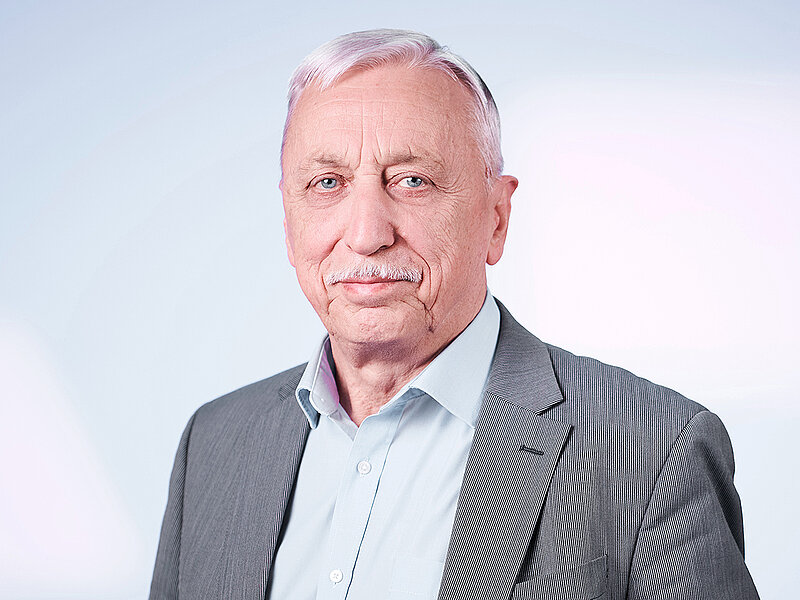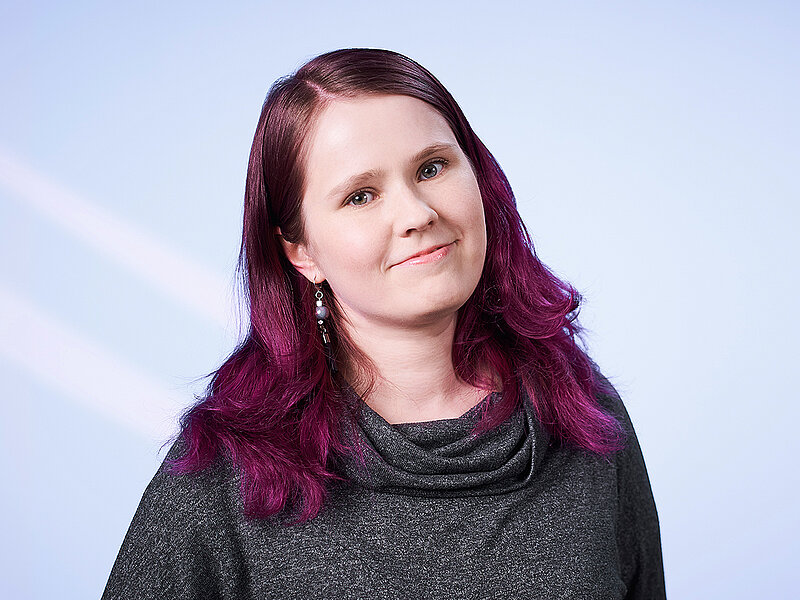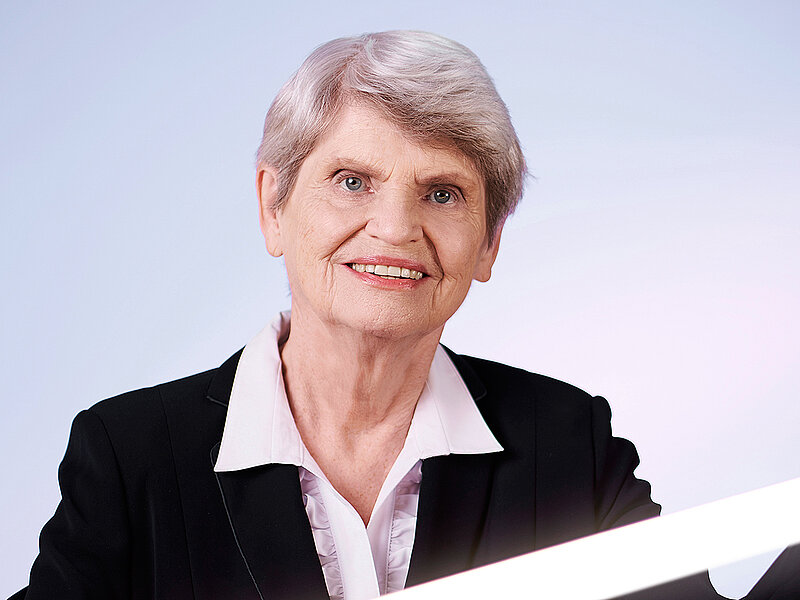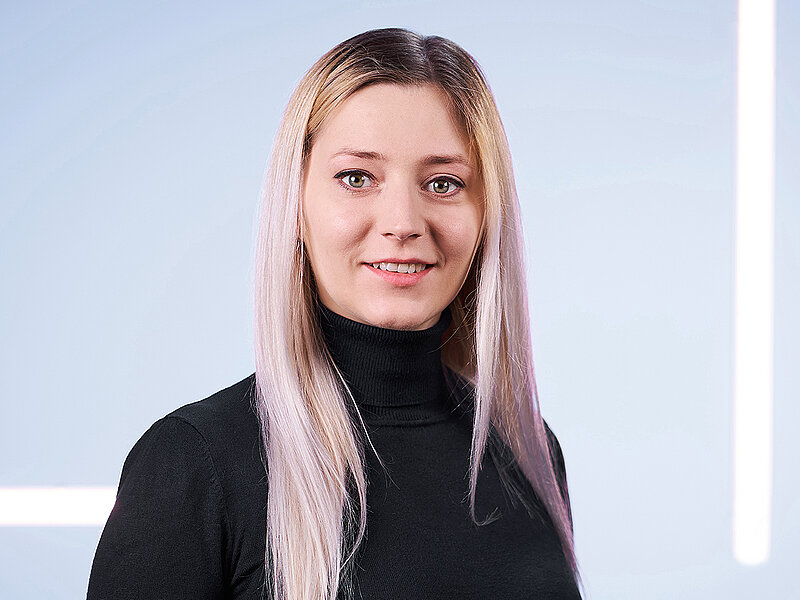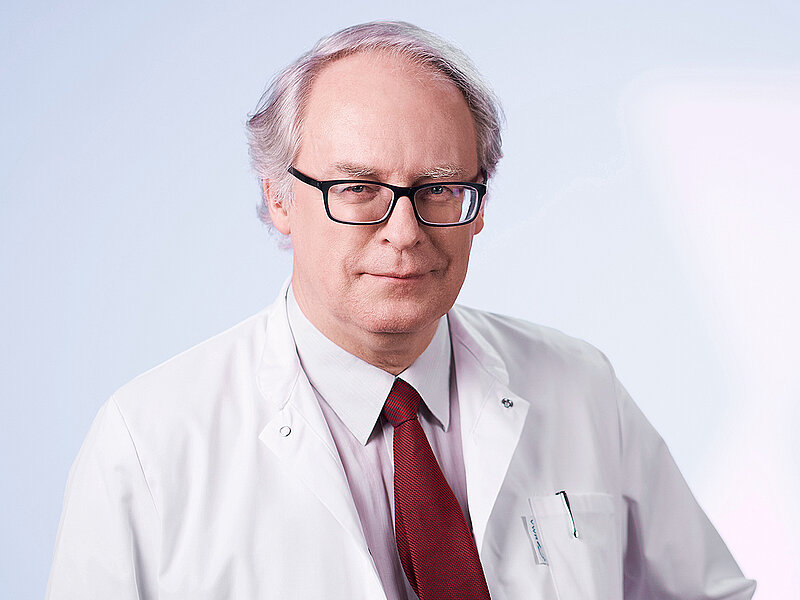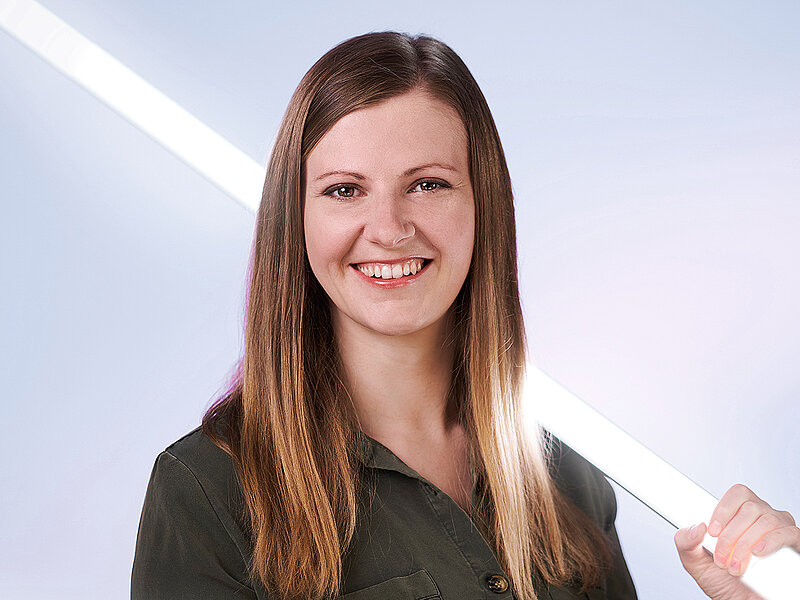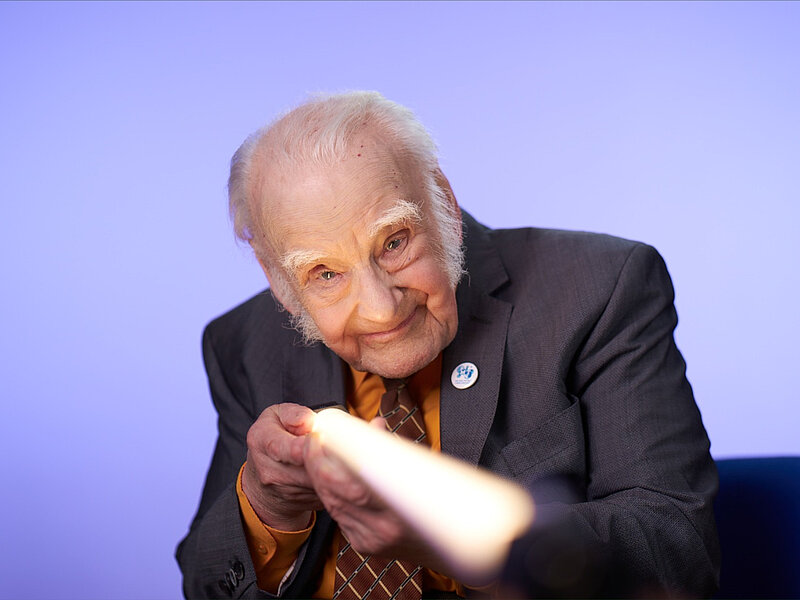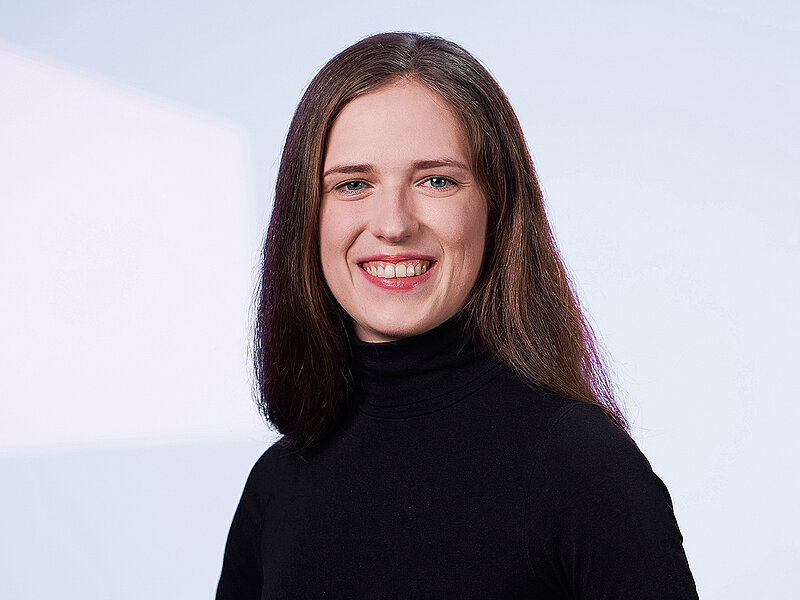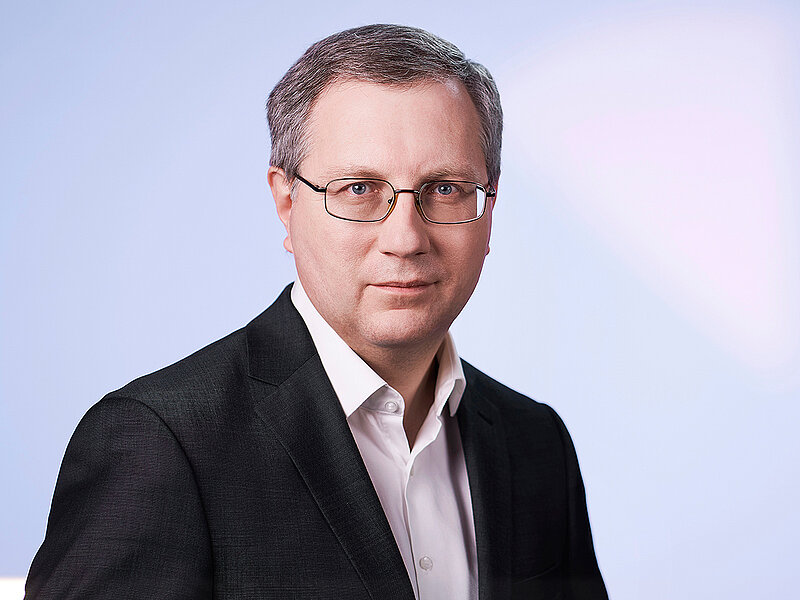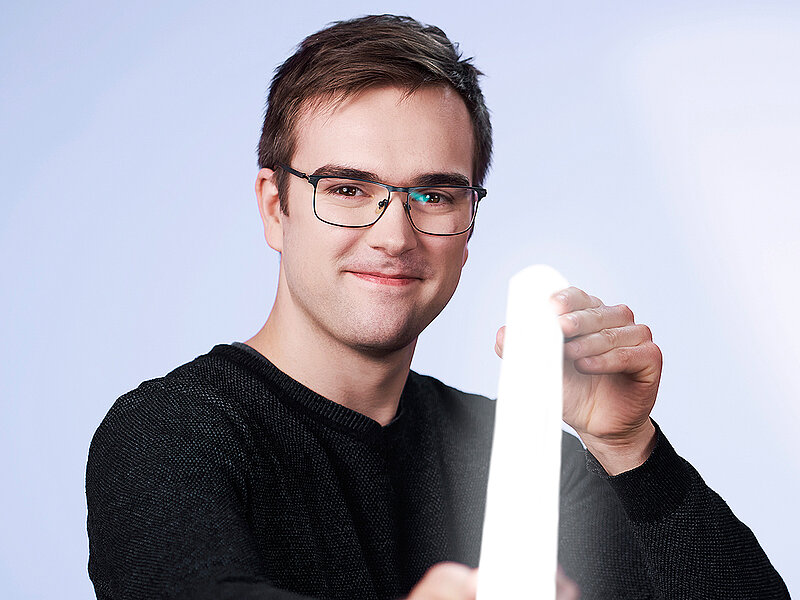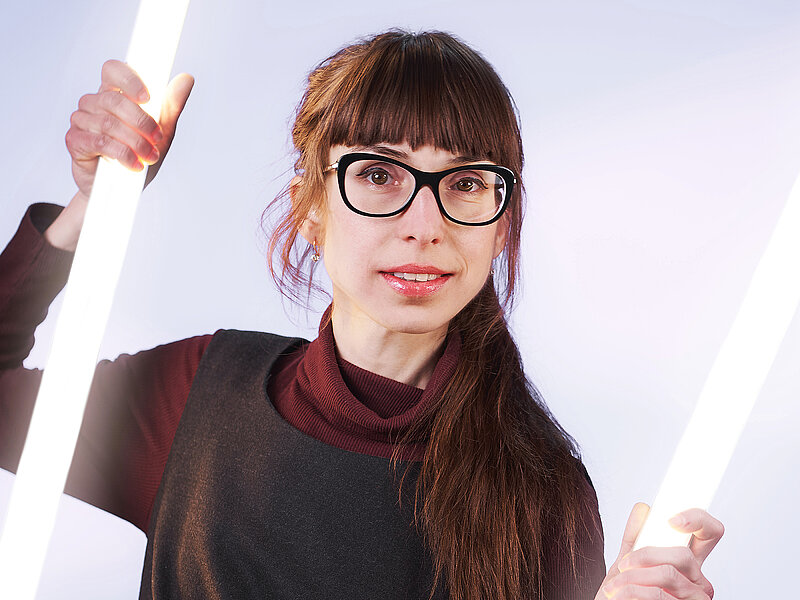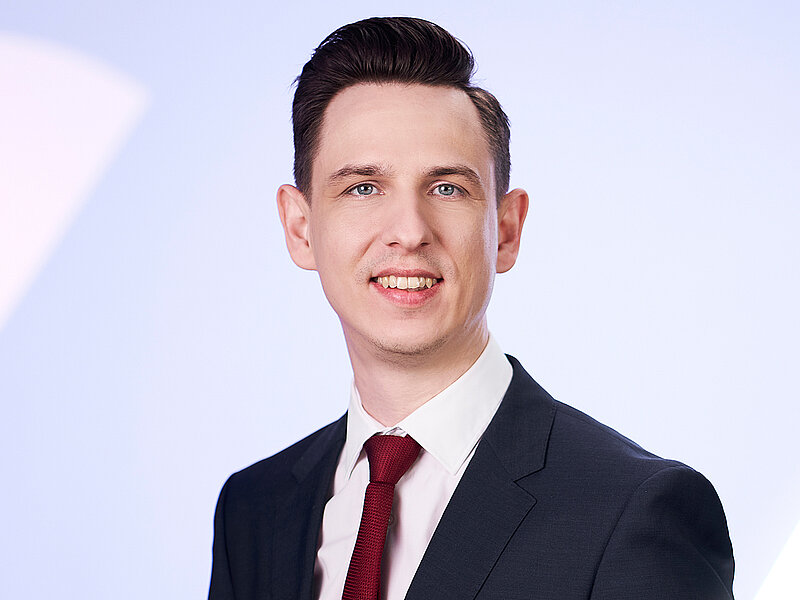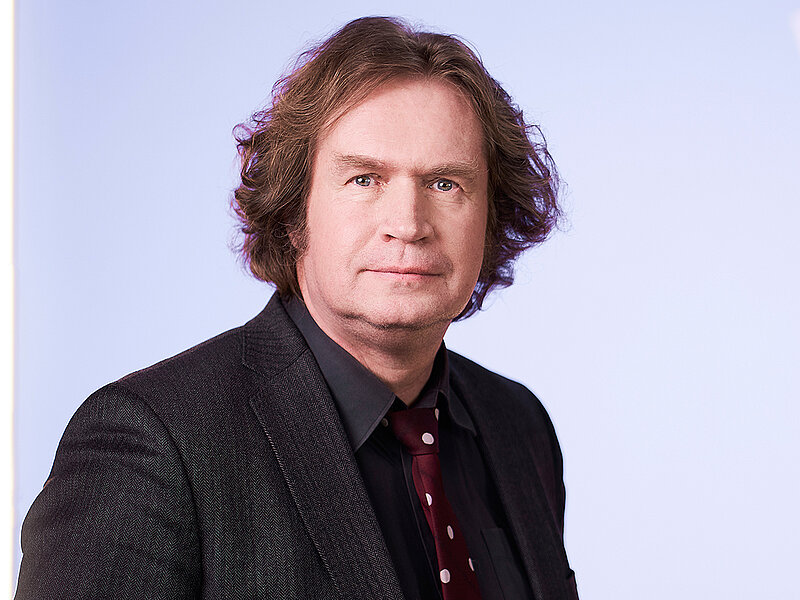Since I am the head of the ISSP UL’s Microscopy Laboratory, much effort has been invested in developing the laboratory. We mainly work with the development and launch of the latest microscopy methods. Before that, I was the head of the ISSP UL’s Laboratory of Optical Materials, and at the same time - since about 2012 - I have been working with microscopes. When the Microscopy Laboratory was set up, I purposefully focused on that direction.
I came to the Institute when I was a 2nd-year student. Other young people - Anatolijs Šarakovskis and Andris Guļāns – also came to the Institute at the time. There was a relatively large number of science students that year. The early 2000s were, in general, a time of significant progress in computer science. If we were the ones for whom computers were not common in childhood, and we learned programming in schools at a level that is no longer relevant, then the next generation has grown up with computers.
I have always been attracted to the world of art. By the way, art studies were one of the things I considered after school. Einstein said, “Imagination is more important than knowledge. Knowledge is limited to all we know and understand, while imagination embraces the entire world.” So, we can draw parallels between the worlds of science and art because working in science requires imagination. You can learn the facts, but it won't make you a great scientist. This is particularly important because diligence alone is not enough. We will not invent anything new without imagination and creativity. I used to play chess. I remember there have been some trainings when I got up from my chair to see the game from different angles. Don't sit in a box! Try to get out of standard thinking and solve the problem with a different approach.
During school, I was good at science. As a child, I enjoyed experimenting - building, welding, and making constructions without the help of others. I still like practical work, like carpentry. This is important to me as a practical person - the opportunity to see the result. This can also be applied to research. I feel satisfaction when I look deeper and understand how something works or find a solution to a problem or an answer to a question. There is no routine in scientific work. Topics and problems are constantly changing. Some of my fellow students went to programming. I think it's a more monotonous job, but everyone has their profile and passion. To work in science, one must have an interest in things, a desire to explore processes and understand what and why something happens the way it does. We think in analogies about how something else could be built or improved. This kind of thinking and interest is noticeable in childhood. This can be applied to both experimental and theoretical physicists who are interested in solving, for example, mathematical problems. Regularities and correlations must be sought in any scientific issue, and not just in physics or chemistry but in all processes in life.
In experimental science, each scientist uses their methods to act on a thing or process and see the results of those actions. This is the basis of the experiment. We watch and analyze thousands of signals. There is an interaction and analysis of results - as in other processes - both in society and elsewhere. The basic principles remain the same. The only difference is that we do not have a basic knowledge of many processes. Any study begins with a hypothesis put forward from the initial experiment. A hypothesis can be a variable that needs you to be able to adapt and understand it. An experiment is often performed, and a side effect appears, which is something unexpected and possibly the beginning of a new research direction, as was the case with graphene, which was discovered recently and was not a targeted area of research.
If we think about scientific discoveries in general, many scientists work on each process nowadays. It is not that one person invents the display screen of a new mobile phone. It is a collaboration of many scientists. It is like a mosaic - everyone brings their small part. In any area, discoveries go hand in hand with a particular time. If we look at significant discoveries, such as the discovery of gravitational waves, it took a long time. Science first had to build the technological capability to make this discovery.
I used to be very interested in history and art, but now I have less time to devote to these fields. There was a time in my life when I taught a course on light to photographers. Photographers often worked with light from what they had learned empirically, so I explained what and why was happening from a physics approach. Today there is a wide range of opportunities to become a photographer. Before the digital age, it was hard for photographers lacking technical knowledge. In the past, there were no technologies to do all this automatically. You had to know the exposure, measure it, and think about the light. There are many more opportunities thanks to technological advances now. It helps those photographers whose artistic aspect is more pronounced than their technical side. With the development of technologies, artistic opportunities are also growing. People's perceptions are transforming in the digital age —a new line of art research is likely to emerge on how perceptions in the digital world change. Times come with their changes and achievements.
I work in the ISSP UL’s Laboratory of Organic Materials and deal with electric and thermoelectric measurements. During the development of my doctoral thesis, I started a new research topic in our laboratory - the thermoelectric effect in organic materials. Accordingly, I have developed new measurements and methodologies for our laboratory. The thermoelectric effect is the effect of directly converting heat into electricity. This effect makes it possible to create an electric generator without moving parts that can wear out. If we can provide a temperature gradient on the material, then an electric potential is generated under the influence of this gradient, and the current flows. As part of my doctoral dissertation, I researched how to develop a thermoelectric generator from organic materials. We realized that it is challenging to compete with thermoelectric generators that use inorganic materials - their efficiency is higher than in organic materials. However, organic materials have a number of other advantages, such as the ability of organic materials to be made flexible, which opens possibilities for new applications. But there are several other benefits, such as the ability of organic materials to be made flexible, which opens new applications. I also concluded that the electrical conductivity of these materials is not so high as to obtain high power from such generators. However, from the physics point of view, we need to look at the parameters that characterize organic materials, for example, their very low thermal conductivity, which is good because we can get a more significant temperature gradient. On the other hand, electrical conductivity describes how well this material conducts current and how much current could be obtained from this particular material. Thermoelectric power shows how much electrical potential is generated for a temperature gradient. Summarizing the good set of things, I concluded that these materials could be used quite well to create sensors, where it is not necessary to gain a lot of power, but it is enough to read the voltage formed in these materials. It also gave rise to the idea of a commercialization project, which is already in the final stages, in which a new type of laser power meter was developed.
It is gratifying to see such projects implemented, as they have taken a lot of effort from you. The process in science tends to spiral. There are stages when nothing works out as intended, but you must go through them to get to the next level and develop something further. It is part of the process. The moment you get over it and get to the stage where everything works, you feel the satisfaction that is the driving force for further scientific work.
On an everyday basis, we work as a team and individually in the laboratory. The cooperation with colleagues is excellent - we discuss plans and existing projects and analyze the results. Often how is more important than what. So, understanding how something works and how it can be improved is especially important.
When I was in my lower secondary school, I was always looking forward to physics lessons. I was very interested in the natural sciences and everything related to them. Mathematics was one of my favourite subjects. I entered the chemistry class at the Riga State Gymnasium No. 1, but I switched to the physics curriculum since I won first place in the State Physics Olympiad in the 10th grade. Passionate physics teachers who knew how to teach physics in an exciting and high-quality way influenced me significantly. I want to express my gratitude to my physics teacher Pēteris Bricis. The next big turning point was the student scientific research paper I developed in secondary school. I had the opportunity to develop my work at the ISSP UL, so I found myself in the Laboratory of Organic Materials. Inta Muzikante, head of the laboratory at the time, was very inspiring. She was both interested and able to explain the topic very well, and the laboratory did not seem like space technology anymore (I must confess, I had such a notion while at school). So, when I entered the Faculty of Physics, Mathematics, and Optometry, I already had started working at the Institute. The head of the laboratory appreciated my enthusiasm and interest, thus involving me in the overall flow of research work done at the laboratory. My first job was to improve the existing electrical measuring equipment allowing us to perform measurements more productively. After that, I was gradually involved in research conducted with Lithuanian colleagues. I developed my bachelor’s thesis in the same laboratory. When working on my bachelor’s thesis, I used research methods developed in our laboratory before. During my master’s degree studies, I started introducing new measurement methods. When I was in my doctoral studies, our laboratory (we were one of the partners) worked on a large-scale European-wide project on the thermoelectric effect. I was offered to participate in this project, and I agreed without hesitation as I was interested in the topic. As a result, the theme of my doctoral dissertation was directly related to this big project. The beginning was not easy because the laboratory did not have extensive experience on this particular topic, so I was glad to have the opportunity to develop it.
What surprised me when I started working in the lab was that the processes didn’t happen so fast. When I went through all the stages, I concluded that there was a lot of unpredictability - something failed and repeated attempts had to follow. This was how the overview of scientific processes and work began to take shape for me. With years of experience, I realize that optimism alone is not enough.
What attracts me the most is the diversity – sometimes, I have to try to explain something completely novel and comprehend what is going on because there are no instructions. Sometimes, there is a discovery made. One thing is to explain what, but the other is to explain how. It is gratifying when you have been doing something complicated for a long time and haven’t immediately seen a tangible result, but then comes the moment when you see it. One crucial point is that research often leads to ideas for another study or discovery, as with a new type of laser power meter, which would probably not have been possible without the thermoelectric generators. As you have to look at things from a broader perspective, you notice their added value and many possibilities.
I appreciate the fact that my work involves attending scientific conferences in other countries. It is an opportunity to meet colleagues from all over the world, discuss and share the latest results and discuss the latest accomplishments. A big bonus in our work is that we can plan our work and time.
I enjoy active recreation and travel. This is my recreation: hiking, biking, mountain climbing, rock climbing, and mountaineering! However, fewer of those activities have occurred in the last two years due to the pandemic. I have a tradition of going to some Mediterranean islands to climb the rocks in the spring. I hope I will pull it off this year.
I am pleased to have completed my postdoctoral research on "Quantum Chemical and Molecular Dynamics Study of Advanced Solids and Nanomaterials: A Challenging Road to Reality" last year. Some time ago, I did an internship in postdoctoral studies in Switzerland, and then I returned to Latvia. In my opinion, internships abroad and international cooperation are essential to broaden a scientist's horizons.
I am currently involved in several research projects. One of them has to do with the modeling of thin films. My contribution is theoretical support to experiments, thus giving a chance for the project results to be published in high-rank journals. Since January, I have been a Latvian Council of Science grant project leader. It is a project about computer modeling, synthesis, and research on the properties of TiO2 nanoparticles for disinfectants. The project, as you can see, has a very practical purpose. Another topic that I find attractive now is the modeling of electrocatalytic processes. For example, we can use certain materials to produce hydrogen or hydrogen peroxide from water. There is a great need to produce this substance in big amounts, and the question is which material to use as a catalyst. The development and implementation of projects are an integral part of a researcher's work. Students often have the misconception that there are discoveries in laboratories every week. That is a romanticized view of science. In reality, scientists write projects, reports, and review articles for other colleagues. The ability to describe and present your thoughts comprehensively is essential.
How do scientists usually decide what to do? The topics of scientific research are put forward following three conditions - the interests of a particular scientist, current priorities (which topics are currently supported by Latvia or Europe), and the competencies of the scientist (what he/she already knows how to do or can acquire). For example, I am currently involved in the CERN project, in which we model defects in scintillator materials. Scintillators emit light by absorbing ionizing radiation, which allows the use of such substances in various radiation detectors. This topic is exciting and relevant, and there is a lot to be done in this direction, given that it is a relatively new direction. It is essential to understand that there are projects implemented within the framework of specific financial support, but then there are themes and ideas unrelated to specific project programs. Not all ideas can be financially supported, but that doesn't mean the ideas are bad. There is this example with the famous material graphene obtained outside of a specific project by Manchester University researchers Professor Sir Andre Geim and Professor Sir Konstantin Novoselov, who devoted one day a week to playing with interesting topics outside the running projects. And they made a discovery that earned them the Nobel Prize. As for the coincidences, it is a well-known story that Mendeleev saw the table of chemical elements in his dream, and when he woke up, he put it all down. Although there are coincidences in science, we can look at them differently. A well-known Russian anecdote is that Russian poet Pushkin saw Mendeleev’s table in his dreams every night for 20 years but did not understand anything. In fact, before he saw the periodical table in his dream, Mendeleev was already very close to discovering one of the most essential laws of nature, the law of the periodicity of chemical elements. It is a story about knowledge, the ability to see and interpret what is observed. For this to happen, the scientist must be competent. A great discovery is not always just a coincidence or luck. Millions of people had taken a bath, but only Archimedes was able to realize what he was observing and make the correct interpretation of his observation.
I am a theoretical physicist. Several features characterize theorists. First, we usually have a good understanding of mathematics and mathematical relationships. If you come to the lab and find it much harder to experiment than create a model, you are probably a theorist. Of course, some people can do both experiments and theoretical work. For me, it is easier to come up with a model than to do experiments in a laboratory. I used to be convinced that I was a chemist. When I entered the university, I had three options - I could become a chemist, a physicist, or a medical student. I had to drop the thought of medical studies because I worked to earn money from the first year, so there was a choice between chemistry and physics. Since I had good results in the Physics Olympiad, I was able to enter the Faculty of Physics, Mathematics, and Optometry without an entrance exam, which decided the question of the study program choice. When I got my Dr. phys. degree, I still had the feeling that (maybe?) I was a chemist. That is why I, being a Doctor of Physics, attended lectures for bachelor chemists as a guest student. For about six months, I tried working in a chemistry lab where I did some synthesis and chemical analysis. As a result, I realized that I was a physicist, not a chemist. But after chemistry practice, I better understand the way chemists think. In fact, physicists and chemists in materials science deal with the same topics – they only think about them differently.
My research work is oriented toward modeling, including computer science, chemistry, physics, and mathematics. Good computer skills are needed in this direction because we work with powerful supercomputers. When we model a physical process, there are many factors to consider. Modeling is always a challenge - how to prove that this model is not entirely disconnected from reality. It is good if the model results can be compared with the experiment. The key is to develop a self-agreed model that includes everything you need. There was a case in the United States where engineers tried to model a large turbine. They calculated the forces, and since the forces acting on the side were 100x smaller than those on the bottom, the engineers did not include the "side" forces in the model. At one point, a turbine that was built based on an established model collapsed, and a major accident ensued. Why? Because even though one factor was 100 times smaller than the other, the other factor was still significant. So, there is always a big challenge: how to include all the necessary factors in the model, discarding only the unnecessary ones?
I am also an associated professor and enjoy teaching higher mathematics. My students are not only future scientists but also programmers. In my opinion, in today's studies, it is essential to focus not only on teaching a topic but also on teaching how to learn. The ability to understand the problem, work with available study materials, and develop the ability to find the necessary information and additional literature in a limited time should be promoted. Undoubtedly, today’s people must learn all their lives to keep up with new knowledge. It could be summed up in a quote from Lewis Carrol’s Through the Looking-Glass: "It takes all the running you can do, to keep in the same place. If you want to get somewhere else, you must run at least twice as fast as that!"
People in society are always guided by their principles and inner convictions and sometimes do not believe in science. Therefore, it is vital to ensure that young people are well educated, have a broad perspective, and can assess the connection between processes. The teacher’s personality is of utmost importance when working with children and young people because the more passionate the teacher is, the more interested children are in learning. Of course, the child's personality and family support play an essential role too.
Today, almost everyone has access to powerful computers, and we can solve many scientific tasks in our notebooks. At the Institute, we have access to LASC (Latvian SuperClaster) supercomputer. Thanks to the development of computer power, we can solve increasingly complex tasks, so the development of technology in scientific work is significant because we can model larger and larger systems. What my colleagues in the 80s calculated for several years to write a strong dissertation now can be calculated by a bachelor's student within the scope of one laboratory work on a laptop. If we try to predict what will happen in 5-10 years, I think we will experience the development of quantum computers. But, of course, you need to know what tasks to give to a computer to get valuable scientific results. There are many resources, but you need to know to understand how to use these resources properly.
Outside of my scientific work, I love music and intellectual games. I enjoy getting involved in organizing Olympiads for high school students and I teach some classes in youth organizations. Music and math have a lot in common. For example, we can obtain all the notes if we change the sound frequency according to specific mathematical rules. I also like to play chess. Last autumn, I won the first ISSP UL chess championship. Whereas working with students and young people is extremely important to me because I believe that if you have learned something, you have a duty to share your knowledge with others.
I am a fourth-generation Rigan, and the more time I spend in Europe's big cities, such as Paris, Rome, and Marseille, the more I am proud of our capital. I am pleased that in 2019 the Riga City Council and the Latvian Academy of Sciences celebrated my scientific work with the honorary award “Person of the Year in Riga”.
I remember my grandmother telling me how she took a horse-drawn tram to get to the gymnasium in the center of Riga. I also remember she could read a thick book overnight, and in the morning, she would tell me about the book, and we would engage in a scientific discussion. Maybe those conversations pushed me closer to science. I remember she called me "professor". I believe there are different opportunities in life. Before I got into science, I considered a career as an athlete because I trained in athletics seriously and was able to jump up to two meters. But my choice fell on physics, stimulated by a great physics teacher. Considering that the production of semiconductors and microelectronics was developed in Latvia at that time and my sister had already started studying physics at the University of Latvia, I was inclined to take up studies at the Faculty of Physics and Mathematics too. Although I have linked my professional activity with science, I see certain similarities with sports. There are challenges, competition, self-discipline, and the pursuit of excellence based on passionate and selfless work.
In 1974, I graduated from the Faculty of Physics and Mathematics of the University of Latvia. The personalities and professionals you have a chance to work with are significant when starting work in science and continuing it because they motivate you to strive for higher goals. During my studies, I was lucky to be educated by excellent physicists: Professor Ilmārs Vītols from the University of Latvia, Professor Jānis Kļava from the University of Bordeaux, who was the supervisor of my dissertation, and Dr.habil.phys. Juris Zaķis, the first director of our Institute. In parallel with my studies, I started working in the Laboratory of Semiconductor Physics Problems transformed into the Institute of Solid State Physics in 1978. Under the supervision of Professors Juris Zaķis and Jānis Kļava, I developed and defended my dissertation in 1980 on the topic EPR of Disordered Solid Materials. I was lucky to have met and made friends with the outstanding physicist of our Institute, Dr Yuri Kuzmin, who headed the Laboratory of Programmed Experiment since 1978 and lay the foundations of EPR spectra modeling and, together with Jānis Kļava, established the new research direction EPR spectra modeling in disordered materials. In the eighties, a number of doctoral dissertations at the University of Latvia were defended in this field under the supervision of J. Kļava (Dr Juris Purāns, Dr Jānis Trokšs, Dr Alla Bals, Dr Leonīds Čugunovs).
In 1982, I started independent scientific work. I went on an internship at the famous Italian National Laboratory of Enrico Fermi to develop a new research direction for Latvia - synchrotron radiation in the natural sciences. When I returned to Latvia, Juris Zaķis asked me suspiciously - "Do you intend to build a synchrotron in Latvia?". I replied: "Latvia will be in Europe soon!". However, another ten years passed until Latvia returned to Europe. In the meantime, I had to go to distant Novosibirsk to perform my synchrotron experiments. As a result, I defended my habilitation work XAFS Spectroscopy of Transition Metal Oxides in 1993.
Later, in the mid-1990s, a greater focus was on X-ray absorption spectroscopy (XAS) studies using synchrotron radiation. Together with Alexei Kuzmin, I have had the opportunity to establish a new scientific direction in Latvia - applications of synchrotron radiation in the natural sciences and run the newly established EXAFS laboratory.
I have been working with the application of synchrotron radiation in physics, chemistry, and biology for more than 35 years. Another important achievement for me is the experience and results gained in working with world-unique sources of synchrotron radiation in other countries. Many important, world-renowned results have been obtained using foreign and self-developed equipment (EXAFS laboratory spectrometer, nano X-TIP X-ray microscope). The smaller the particle we want to see, the more powerful the equipment is needed. Today we can see even femtometer-sized details that were not even imaginable ten years ago. Many things that were not possible have become a reality today: experiments at super-high pressures (up to 200 GPa - comparable to the pressure at the center of Earth) or superconductivity at room temperature. Science is the driving force behind development, as is scientific progress that offers more and more opportunities to humanity. Another significant achievement is the latest world-class unique experiment, which was followed by a publication in Nature Communications (www.cfi.lu.lv/en/about-us/news/detailed-view/t/65165/) in 2021.
We are pleased to work on solving fusion problems within the EUROfusion project. The fusion problems are a significant challenge for science in the 21st century because fusion strives to create an infinite energy source. To have the opportunity to participate in a project of this significance and scope - speaking in parables with the world of sport - we had to compete with other countries. We are pleased that we succeeded. We understand how nanoparticles are formed in the steel used in a nuclear reactor to make the steel exceptionally durable in terms of temperature and radiation. We are participating in this project together with the German Institute of Technology, one of the leading institutes in this field.
I am satisfied with what has been achieved in each work-life period. I have developed three new directions for the ISSP UL, as a result of which three new laboratories were established at the Institute: EPR Spectroscopy Laboratory together with Jānis Kļava, which Professor Uldis Rogulis later headed; EXAFS Spectroscopy Laboratory, now led by Professor Alexei Kuzmin; and Thin Films Laboratory, which I run for five years now.
I have lectured in France (the University of Marseille and the University of Paris) and Italy (University of Trento) on thin films' synthesis, properties, and applications. I have been a visiting professor at the universities of France (Paris-Sud, Marseille, Bordeaux, Amiens) and Italy (Trento, Rome), where I have lectured on the use of synchrotron radiation. The laboratory is currently a full partner in several international projects with Germany, France, Italy, Switzerland, and Russia. I have always emphasized the need to work and develop ideas internationally, building greater international cooperation for our scientists.
I also work with future scientists in Latvia, France, Italy, and Switzerland, supervising their bachelor’s, master's, and doctoral theses. In 2018, I had the honor of receiving the Latvian Academy of Sciences E. Siliņš Award in Physics for outstanding achievements in solid-state physics. Since I have had the opportunity to work internationally, I can confirm that ISSP UL is a center of excellence, and I am pleased to contribute to the development of the Institute and the training of the younger generation of researchers.
To achieve success and excellence, the right set of conditions is important: a strong team, a clear direction, and the possibility of seeing the opportunities that can be pursued together. We all have many options in life. We just have to make the right choices and work on their materialization. The next step is to constantly look for new opportunities. We must continue to strive for new ideas and persevere on what has been started, being aware that our work is an investment in the future.
Dr.habil.phys. Juris Zaķis used to say that science is not just about writing publications - it is about constantly moving towards new ideas. I have always strived for that and invited others along.
I was born in a small Ural town in the Perm region by the picturesque river Chusovaya. The first turning point, which influenced my choice to tie my life with science, occurred in the 8th grade. After winning an Olympiad, I had a chance to have a 40-day stay at the Artek camp in Crimea. It was a completely different world. So many new impressions! I met many students from the Soviet Union. I remember an interesting group from Uzbekistan, also from the Baltics.
After school, I entered the Moscow Institute of Physics and Technology, which is still one of the best physics schools. It was a fascinating time. From the first day, we had the opportunity to learn from the best science professionals. The mathematical analysis was taught to us by Academician Sergey Nikolsky, who was also born in the Perm region and lived a very long life - 107 years. His textbooks are still considered as one of the strongest in mathematical analysis. I also remember Professor Vladimir Agranovich, who had a key influence on my choice of the research field. He was one of the founders of the exciton theory and the author of some books on solid-state optics, which he also lectured to us - students. Although this scientist is a theoretical physicist, his deep knowledge of the experiment was astonishing. I said "is" because he is still active in science, even though he is 93 years old. There are only a few such theorists in the world. He felt and understood the experiment so profoundly. He presented the information and its potential benefits clearly to everyone, including the experimentalists. He advised us to think carefully about our choice to become scientists. He said we could stay in science if the family agreed but made us aware of what it would take. He advised us to work better as trolleybus drivers if material values were more important than our inner world. We would disconnect from work, get our salary, and live a normal life in the evenings. A person who has connected his/her life with science does not have the same understanding of working hours as others because often when doing one's job, thinking, and researching he/she has this feeling that time simply disappears. The mind works continuously and solves an issue. The opportunity to meet and learn from such high-ranking scientists certainly left an indelible impression on me.
We studied six days a week. Lectures started at 8:30 and ended at 19:35. Of course, there was also homework. I could still go to the theatre because it was essential to me. I have seen the entire elite of Soviet-era theater, and theater is still one of my biggest passions. I graduated in 1984 when a time of historical change began. New opportunities appeared for people, and many, also my course mates, chose a different path - not science. Someone started to work at the bank; someone got into the business. Many went to other countries, including the United States.
In 1985, there was no Internet or computer. It's hard to imagine now. We obtained all the information from scientific journals. We often went to the Fundamental Library of the Academy of Sciences in Riga. It was built in the late 1970s. To inquire about a scientific question of interest, you had to book a particular journal and wait about 20 minutes. When you were given the journal, you sat at the library and read for a long time. You had to be able to read and write down everything you needed. Copying began around 1986, and it wasn’t free. You had to process a lot of information and take many notes. That was our daily routine. It was so different compared to today. Before and after World War II, German scientific journals were very strong. Around the 1970s, American and English journals began to dominate, both in terms of quality and quantity. I would like to point out that, although I actively use modern databases, I still look through all the scientific journals in physics and chemistry. I will never give up on this bad habit. I have developed my own reading technique over the years. First, I review the page from the bottom up, then start reading. This also applies to scientific articles. When you look at the last part, you begin to understand what the author suggests. As you read, you begin to pay attention to the author's instructions - how he/she takes you to the respective thought. When you know the end of the study, you begin to consider - what arguments the author uses to reach this conclusion. This is not always so obvious. I use this analytical approach when I work with scientific text.
After the break-up of the Soviet Union, I did not stay in Moscow. In 1982, when I had two years until graduation, I considered other scenarios, including returning to Perm University. It happened so that I could travel to Elbrus with other Muscovites and groups from Latvia and Estonia. After getting acquainted with the Latvians, I came to see Riga. After four years of living in Moscow, with its fast pace and long journeys on the subway, I thought it would be a good time for a change. There was another thing. In the 5th year of studies, I attended a scientific seminar where the results of the scientific dissertation were presented. I listened to Leons Intenberg's dissertation on Salaspils (nuclear reactor – civilian research facility). I became interested in it and thought there might be opportunities for scientific research. At the end of the 5th year, I was allowed to develop a diploma thesis in Latvia. So, I arrived in Salaspils at the beginning of the 6th year of my studies. After graduation, I worked as a math teacher at the Riga 43rd secondary school in Grīziņkalns (a neighborhood in Riga) for a while. After work at school, I also taught private lessons.
The subway had one valuable advantage - people read a lot there and, in a way, it advanced their education, which is no longer a common phenomenon today because people's habits have changed dramatically.
If we look at nuclear energy, it is still a vast area for research. We must firmly outline our competence in these matters. Where does our competence come from? It comes from the fact that we had a nuclear reactor in Salaspils, in which one of the strongest schools of radiation physics research in the Soviet Union was developed in the early 1960s.
Scientific work requires a lot of input - personal and professional. Before you go into science, you should carefully consider whether you will dedicate yourself to this profession. It is essential to give perspective to young scientists.
When I was a child, I never thought I could become a physicist or work in science. My first choice of future profession was to become a firefighter, later – a doctor. However, while in secondary school, some of my classmates were planning to enter the faculty of economics. I was carried away by this idea too. I even started taking preparatory courses in mathematics to pass the entrance exam as well as possible. During one of the school's excursions, the physics teacher took us to the Salaspils reactor, which was still operating at the time. It was a unique event because we could look at the special equipment and listen to real scientists talking about elusive things. We climbed to a special room above the reactor, where we could see the Vavilov–Cherenkov radiation - a blue glow. It was mind-blowing - radiation generated by charged particles that move faster than the light in the water layer above the reactor! This experience changed my mind, and I decided to study physics. One more excursion in grade 12, this time to the Institute of Solid State Physics, only strengthened my confidence in choosing my future profession.
To work in science, you need to have a good knowledge base in physics and mathematics and to achieve something, you need stamina. It might take many experiments to see the desired result. When the experiment fails, you should go on and work with confidence that everything will work out eventually.
The most exciting thing in research is the discovery, the moment of discovery. Besides, it does not have to be a huge discovery. Even a tiny technological solution gives great satisfaction. To exemplify this, I can share my experience from the time I was working at the Centro de Fusão Nuclear in Portugal. A small TOKAMAK (from Russian: toroidal chamber with magnetic coils) is installed there - a prototype of a future thermonuclear reactor. It is an experimental system that observes and investigates hydrogen plasma discharge. To limit the plasma, scientists at the Salaspils Institute of Physics had created a jet of liquid metal - gallium - that spatially restricted the plasma, preventing it from touching the walls of the tokamak. My task was to study gallium distribution in plasma using its spectral lines. For this purpose, the tokamak chamber used a special box, which allowed me to examine it at a depth of about 50 cm. I performed several successive experiments, rotating the lens at a minimal angle. It turned out that to do it in a controlled manner was not possible. And then, I thought of attaching a laser pointer to the lens, and the laser pointer's light was directed to the wall. The turning of the lens also shifted the laser light spot. I managed to associate the spot on the wall with the lens's direction at the plasma. It took me the whole night, and I still remember the passion and excitement I felt while doing this work. Was it a world-class discovery? Certainly not, but at that moment, this idea and the technological solution associated with it were a mini discovery that I was certainly proud of. My solution was also very much appreciated by the local Portuguese.
Another example is glass-ceramics. It is an interesting material when the glass is first melted and then cooled very quickly. After that, the glass is heated in a controlled manner. As a result of the heating, very fine, invisible crystals appear in the glass matrix. The crystals improve the spectroscopic properties of the material significantly - it begins to luminesce a hundred or a thousand times more intensely. As if nothing has changed, the glass stays the same. Still, it luminesces noticeably stronger only thanks to small changes in the material structure, which can only be noticed with specific equipment. Exciting, isn't it? And you are the one that has achieved it! You share this discovery with other scientists, and your work is appreciated - other scientists quote you. It gives true gratification. You forget the sleepless nights and a few hundred unsuccessful attempts. But the peak of gratification is when someone somewhere can put your discovery to practical use!
At present, the feeling of gratification comes from performing various measurements with the new laboratory equipment and helping companies, thus strengthening the cooperation between science and industry. I am also pleased with the achievements of the students working in the Laboratory of Spectroscopy, for example, young Doctor of Physics Guna Krieķe, who defended her dissertation in 2020. Her dissertation was recognized as the best in natural sciences at the University of Latvia in 2020.
When it comes to recreation and hobbies, I have to say that I have enjoyed pool since my study years. Together with my course-mate, we were behind the idea that the Institute needs its pool table.
I started to work at the Institute in 2012. I work at the Thin Films Laboratory which was established by joining together several other laboratories in 2017. The scientific work of the laboratory is related to thin films and nanomaterials which have at least one of their geometric dimensions in nanoscale. At the laboratory, we study materials from their synthesis to application.
When I was still in secondary school, I considered studying engineering and yet I chose to study at the Faculty of Physics and Mathematics (University of Latvia) because I was good in sciences, particularly mathematics. Of course, when you are still in school, it is not an easy task to decide what is it that you want to do for the rest of your life. Therefore, I like the Scandinavian approach which means that young people often take up some work after secondary school and only at the age of approximately 22 do they start to study at university because they are more focused on their abilities and interests. One thing is clear – I did the right choice. The notion you get about science at school is often inaccurate and has originated from watching movies. The school curriculum looks only at the surface of physics. I also had an incomplete idea of physics during school because it seemed more like engineering. When I started studying at the university, my view on physics completely changed. Going deeper, I realized how little I know and how vast and immeasurable the world of physics and science in general is.
Another reason why I decided to study physics is my interest in astrophysics and cosmology. I still keep myself up to date about the topicalities in these fields. I have always been fascinated by microchips, small things and how electronics work in those small boxes. This is what I started to do at the Institute. At first, I worked with the synthesis of semiconductor materials, then new equipment became available that made it possible to fabricate nanodevices.
The supervisor of my bachelor thesis was Dr.phys. Boris Polyakov. My bachelor's, master's, and doctoral theses were on similar topics. Bachelor thesis - on graphene, which is a two-dimensional material; master's and doctoral theses - on other two-dimensional materials in combination with nanowires. After the first study year, the active students usually become employees at the institutes. And that is exactly how I started working in the laboratory of ISSP UL.
In recent years my work has been focused on thin films, which is a new direction for me, and the new and well-equipped laboratory opens a whole new field of research. One thing is to learn how the new equipment works; the other is to figure out what can be achieved with it. At our institute, some research areas slightly differ from the classical physics taught at the university. The scientific work is tightly linked with the technologies and equipment, which means that engineering skills are required too. In our laboratory, students from Riga Technical University work with specific tools and development of the deposition process of thin films.
Much of our daily work involves the development of scientific project proposals. Looking at the unresolved problems in the field or what hasn’t been done yet helps find a research topic. The publications are the result of many years of work. One more thing important for the work of a scientist is to read scientific articles to be up to date with the things going on in the world. I read a lot of scientific literature. In my opinion, this is one way to set research goals - to identify what is relevant and to work in that direction. The second way is to dig deeper and deeper into one topic. To know it thoroughly - up to the basics and thus finding things that haven’t been done yet and could be explored further. This scenario involves greater challenges, and the scientist must possess a distinguished mind and curiosity.
If we think about the topics that could become more and more relevant in the future, then one of them is nanoelectronics, which provides an understanding of how nano-devices can operate in quantum regime. This will be essential for quantum computers. It should be noted that in the last 20 years the problem in nanoscience is that biologists, medical doctors, physicists, and chemists find it difficult to work together due to the different views on certain problems and lacking mutual touchpoints. In the last 5-10 years, to form a broader view, the western countries have introduced dual degrees, meaning that you can get a degree in, for example, biology and physics or physics and computer science.
I look at science in the span of the last 100 years. It's like a big puzzle - there were 10 pieces then, now there are 1000. The size of the puzzle is the same, only the size of each piece changes. Einstein, for example, found the big piece. Nowadays, every scientist gives a small piece, and only together do we make up a big one. As for the great discoveries, they can happen by leaps. For example, at the end of the 19th century, people thought that the main problems of physics had already been solved and that only a few smaller-scale problems remained. But it turned out that from the small problems completely new fields of physics emerged.
In my opinion, we must always continue to look in the direction of elementary particles or space exploration. There is much inexplicable in space, and by exploring it, we can create achievements in a completely different field, as was the case when people looked at the spectrum of the sun and could not understand what was there. As a result, because of the solar spectrum, we realized that there is quantum physics, and because of quantum physics, we have semiconductors, and because of semiconductors, we have the phones we know today. It is not always possible to immediately know and predict the impact of results. That is the unpredictability of the world of science.
Work in science, first of all, is very systematic work, because you have to see the structure in research - from small details to the big picture. Some scientists approach things very systematically, do everything according to plan, of course, sometimes they deviate from it if the situation requires. There are also scientists with a more creative, often, more chaotic approach to research, but creative physicists can also be very systematic. Personalities are very different. The work in science is varied and it provides many opportunities. Everyone just must find his/her field of work.
In my spare time, I enjoy photography, music, and rock climbing – mostly indoors, but I have climbed rocks in Spain, Finland, and France. I like rock climbing not only because it is great physical training, but it also involves technique – like putting a puzzle - everything must be carefully considered and planned.
Dr.phys. Varis Karitāns
I think a scientist must have a desire to create something lasting - to give something valuable to society as a whole. A scientist is given the ability and desire to understand the structure of the world. Let's call it a talent. This is an important precondition for the work of a scientist because talent is developed while working and studying. If not, the work is largely in vain. In fact, this relates to any job.
I work at the ISSP UL’s Laboratory of Visual Perception, where the quality of various optical systems is studied. These optical systems can range from the human eye to telescopes. In the laboratory, we also study the optical properties of materials used in visual science, as well as various light sources and their effect on visual perception. I started working at the institute in 2007. It was right after my master's studies. I like this environment, people are welcoming, interesting personalities work here. The institute has developed significantly during these years. For example, cleanrooms with a modern environment and a full range of devices have been set up at the Institute.
In our research, we use adaptive optics, an optical system that adapts to image distortions and corrects them by shaping a deformable mirror. It could be said that adaptive optics acts opposite to warping mirrors. Warping mirrors distort a high-quality image while adaptive optics corrects a distorted image.
I started working in the field of adaptive optics during my doctoral studies, and my field of work is not narrowing - it is only expanding. Experience in this area has grown as well as the number of publications and conference presentations. All this is an integral part of scientific work. I have spent 14 years working at the ISSP UL, which is quite a lot. It is a pleasure to have the opportunity to supervise students' work and to educate them on optics. It is also nice to explain to someone what he/she does not understand. I feel that the work I do is valuable and needed. At times, it seems that what I do here, on a large scale, seems just a brick, but when all the bricks are put together, something beautiful comes together.
I think a scientist must have a desire to create something lasting - to give something valuable to society. A scientist is given the ability and desire to understand the structure of the world. Let's call it talent. This is an important precondition not only in the work of a scientist but in any sphere of life. Talent is developed through learning and working. If it’s not - it is not possible to succeed.
The knowledge we gain in our work is available for other fields too, for example - astronomy, where such technologies are used. In astronomy, adaptive optics is an invaluable tool for improving image resolution. Larger and larger telescopes to collect more light are being built in the world. When we increase the size of the telescope, we can see more details, but only if the atmosphere does not interfere in the process. While we are looking from Earth, the atmosphere does. These technologies could be helpful in optical observatories. Baldone Observatory in Latvia has 2 large optical telescopes that, in a global context, are very good. One of the telescopes is for visual observations, the other is equipped with an astrophotography camera. The largest telescope currently planned to be built is a few tens of meters in diameter. Such a telescope will allow us to look further into the past because as we will look at the more distant objects, we will be able to have a glimpse of a deeper history, understanding what happened in the early phase of the universe. Presently black matter is an actively researched topic. It turns out that the existing mass in the universe is not enough at all to explain the movement as it is. Dark matter makes up about 90% of all matter that is still incomprehensible - one of the riddles of cosmology. Research of this scale is, of course, only possible through international cooperation.
The science commercialization project, which was aimed at finding customers for adaptive optics technologies, was recently completed. This project could be a good start to take it forward, and possibly to equip a private observatory with the adaptive optics we have developed. Together with the Portuguese company LusoSpace, we are currently implementing the European Space Agency’s (ESA) project, which is an excellent continuation of the commercialization project. The recently won support of the University of Latvia Foundation and the company MikroTik plays a significant role in our research.
While in school, I was good at physics and mathematics. I was lucky to have an enthusiastic physics teacher. I was always looking forward to the physics classes, which encouraged me to think about how everything works in the world. As a child, I enjoyed reading a popular science magazine on astronomy Zvaigžņotā Debess (The Starry Sky), as well as books on physics and various atmospheric phenomena. I have always liked optics, everything related to light, image formation and perception, and astronomy too. As many things revolve around optics in optometry, I chose it as my first field of study. Gradually, I have come to the field where materials science is related to optics - I am increasingly fascinated by research into how the composition and structure of materials determine their optical properties, which can be used in optical and photonic devices.
I have thought a lot about the fact that all celestial bodies are in constant motion, that nothing stands still. We know that the Moon is revolving around the Earth, the Sun moving in the direction of the constellation Hercules at a speed of about 20 km/sec. At the same time, the Sun is revolving around the center of the galaxy. One galactic year is about 250 million earth years. The galaxy is moving away from other galaxies because it turns out that everything in the universe is moving away from everything, but what is interesting – there is no center of expansion. The farther we go in the universe, the faster we move away from everything else. When we cover 3 million light-years, the rate of expansion of the universe has increased by 75 km/sec. Looking at all these processes, one must think hard about the laws and phenomena of nature. It's all mind-boggling at times. It seems that the starry sky is frozen, but the reality is completely different. Ursa Major, for example, looked different 100,000 years ago and will look different after 100,000 years. I often think about such things when looking at the starry sky. The story of the Voyager spacecrafts, which were launched in the 1970s, but continue to send information, even though an interstellar space has already been reached, is very fascinating. There is a hypothetical limit beyond which the processes that take place are unknown. There are theories that our universe is either one or one from many, and that it will expand infinitely. It is all a discussion of cosmologists - theoreticians. This is an exciting topic too.
When it comes to the work environment, the work of a scientist does not always have to take place at the laboratory, near the equipment. I like sitting by the sea. These are the times when valuable ideas come to mind. There are times when recreation is creative. I like long walks alone. I often have a computer with me during walks because I write down my thoughts. Many people ask why I always take a computer in my backpack when I travel. I say that such an environment inspires me to work. I also like to work when it's cloudy and grey outside, when there’s a storm with thunder and lightning. The extreme weather conditions outside help solve problems. A person’s abilities and mood are affected by the things happening around him/her, and those things are interrelated.
MSc. Aleksandrs Platoņenko
What fascinates me about science is that there are problems that have not yet been fully explored. For example, something under the influence of radiation occurs and is not yet fully understood. The specific problem affects only some 1,000 people in the entire world - a small community. But if you solve this allegedly not a fundamentally big challenge, there is an opportunity to share it with this community and as a result, feel satisfied with your contribution.
ISSP UL's Researcher
I work on quantum chemical simulations of materials at the Institute. Currently, there is one project we are implementing within EUROfusion. We simulate processes in aluminum oxide and other oxides to predict what happens to them under the influence of radiation in fusion reactors. I write my doctoral dissertation about it. I am glad that my dissertation is closely related to my work projects, so the results will be relevant in my daily work.
When I was in the 11th grade at school, I was fascinated by chemistry. So, after finishing secondary school, I became a student at the Faculty of Chemistry of the University of Latvia, without even thinking about how it could develop in the future. I must say that I did not know much about the achievements of Latvian chemistry at the time. Only then did I find out that there is a Latvian Institute of Organic Synthesis, which is one of the best in Europe.
I came to the ISSP UL by chance when my present colleagues organized seminars about the Institute and its work. I just saw the announcement on social media. It was my graduation year, and the first seminar took place on my graduation day. After the event, I received various informative materials and became interested in the Institute.
While still at the university, I remember attending a scientific conference that had gathered scientists of all ages. What surprised me was that elderly scientists debated so vigorously and enthusiastically. And they had so many plans and intentions on what else needed to be done. I remember thinking to myself then that it would be wonderful to live a life of continuous evolvement always striving to understand something. I should also mention Professor Dovesi, with whom I had the opportunity to work in Italy. Meeting such personalities certainly influenced and inspired me to work in science.
What fascinates me about science is that there are problems that have not yet been fully explored. For example, something under the influence of radiation occurs and is not yet fully understood. The specific problem affects some 1,000 people in the entire world - a small community. But if you solve this allegedly not a fundamentally big challenge, there is an opportunity to share it with this community and as a result, feel satisfied with your contribution.
After 2-3 years at the institute, I realized that I had to try to separate work in science from everyday life. I must admit that I get carried away and sometimes continue to think about some solution to a problem even on weekends. Our day-to-day work is independent, but science is still a joint effort. So, you must be able to work both individually and in a team.
When working in science, the ability to see the big picture and the regularities is important. For example, when writing a publication, one thing is to obtain results and an entirely different thing is to be able to understand and describe what we achieve with these results, how they fit into the big picture, what we solve with them. Many scientists have access to the same tools, but what they do with these tools depends on their abilities.
I am pleased with the project related to oxygen interstitial atoms in oxides, which is also the topic of my dissertation. I worked on the issue for 4-5 years and now I realize I could have done everything faster, but wisdom comes with experience.
A scientist must be up to date with the current affairs in the world of science, read publications, and learn a lot individually. I am fascinated by the issues of future energy; it is a huge field, and a lot of things are going on there. I am also interested in organic chemistry, biochemistry, and everything related to human health. I find it interesting to read about issues scientists from other fields are working on and what developments could be expected in the future.
Dr.phys. Thomas Alexander Yager
Speaking of scientists' characters, they differ a lot. Some have unique and unusual personalities. Many of them have a great sense of humor. I guess it helps continue even when things get difficult because there are many challenges in the world of science.
ISSP UL's Leading Researcher
I have been in Latvia for a few years now. In the Micro and Nanodevices Laboratory we are working with different materials, different electronic and photonic devices. My speciality mostly has been graphene - 2 dimensional carbon material. It has very interesting properties for different devices and other sensors. My aim is to make some kind of universal sensor with this material, and combine different applications and different sensitivities to have quite broad application use. My work includes many different elements. Thinking of concepts, the design, after completing the device, we need to test it to see if it has the properties we expect. All is being done in close cooperation with colleagues. Each of these parts needs different kinds of individual skills, so as a researcher often you are expected to do a little bit of everything, so you have the possibility to follow through the whole process. And I do enjoy this whole process.
Originally I am from the UK, but I did my Doctor's Degree in Sweden where I started cooperating with researchers from Latvia within one international collaboration project. In 2014 I came to Latvia for a seminar where I gave a presentation. After finalizing my degree in Sweden, I arrived in Latvia.
There is a different working culture in each country with its unique aspects. When you are in the same discipline, there is also a lot of overlap. You could go to any institute in the world and you would have common understanding, interests because we are a part of global society and often trying to solve the same challenges. Cultural differences are those that differ us - different attitudes, different ways of working. When you get to know people, they open up.
You go through different stages to become a researcher. Starting from school, then university, then PhD, but at each of these stages you decide what to do next. You can continue exploring the same path or you can choose to do something completely different. A lot of people go into different directions - some decide to start teaching, some join the industry, and some are going backwards and forwards between those two. It all depends on what drives you and makes you do something.
My interest in physics started at school right before university. But at that time it wasn't the only direction I considered for my future. I was looking into different subjects.
Interesting fact is that my brother is also a researcher in physics, and our parents met as hairdressers. Our parents always encouraged us towards getting education, so that was an important focus when growing up in our family. I studied undergraduate physics at Royal Holloway University of London. After graduation, I was deciding between a research job in Scotland, or a PhD at Manchester University. Then professors from the University of London suggested taking up a job in Sweden. Although it was a bit of a jump into the unknown, at that time I thought I should try and see how it goes. I was open to the future possibilities.
I am very impressed by the advances being made at the clean room and nanofabrication, also by what is being set up in this institute. It is a high level platform for carrying out research. Infrastructure gives far more wider options, so the progress is impressive. In Latvia I see very valuable benefits for future scientists. During a Bachelor's or Master's Degree, students have the possibility to do real research work. This is not the same in other countries. There are some similarities in Sweden, where at the end of your Bachelor one has a possibility to have hands-on research work. It depends on the personality and aims of the individual how far they would like to continue in fundamental research. It's a matter of devotion and attitude towards your work.
Speaking of scientists' characters, they differ a lot. Some have unique and unusual personalities. Many of them have a great sense of humor. I guess it helps continue even when things get difficult because there are many challenges in the world of science. Perseverance helps to go through experimenting and failing that is a part of our everyday research work.
I enjoy the nature and geography of Latvia and the Baltics, and of Riga in particular. Within a small local area you find sandy beaches, natural forests and a large active city with its lively and picturesque Old Town. Latvia also has quite strong and distinct seasons. In the warmer months it’s refreshing to take a short trip to a seaside forest to hunt for gailenes and baravikas (chanterelles and Karl Johans).
I started my career in science in the 1960s. At that time, I worked at the Institute of Physics of the Latvian Academy of Sciences. It had been my place of work until 1991. The location of the Institute was at Salaspils nuclear reactor and my work there was related to neutron activation analysis. We worked on the analysis of various objects - biological, geological, medical, and ecological. In 1991, the nuclear reactor was split away from the Institute of Physics and a Nuclear Research Center was established. It was a time of change. Since I worked in the field of the nuclear physics, I also started to work at this newly established center. We did not move to other location, but the institution was different. All this happened in the early 1990s, at the time when there were other conditions in the country and support for science was at its lowest. The neutron activation was in demand, though. Our field of work was interesting for geologists, biologists, doctors, and chemists. In 1993, I became the head of the Laboratory of Neutron Activation Analysis. This was followed by new developments related to the shutdown of the nuclear reactor, and so several laboratories wondered where to continue their work. One option was to join the Institute of Physics, but there were a couple of other options too. As a result, on 1 January 1999, we - 3 laboratories - joined the Institute of Solid State Physics, University of Latvia. We re-profiled from neutron activation analysis to radiation pollution measurement and monitoring. We were still located at the premises of the Salaspils nuclear reactor because our work required observing radiation safety measures and all the measuring equipment was there too. After that, the nuclear reactor was taken over by the Institute of Chemical Physics of the University of Latvia. And later, when it was taken over by the State Geology and Meteorology Center, we finally moved to ISSP UL. As a result, the Laboratory of Nuclear Reactions was merged with the Laboratory of Neutron Activation Analysis and Laboratory of Radiation Physics was established. Looking back, I can say that the work in Salaspils was interesting. When the nuclear reactor started operating, we were all young scientists. The analysis of neutron activation was also a new field of science then. It was a time of an uplift. When this stage of life ended, it was, of course, sad, and there were fewer and fewer of us left.
The Laboratory of Radiation Physics (RFL) at the ISSP UL was established in 1999 by uniting physicists from the research laboratories of the liquidated Nuclear Research Center of the Latvian Academy of Sciences. The results obtained by the RFL in collaboration with the scientific centers in Grenoble and Munich are of international importance. The data on the properties and structures of various nuclei are needed not only for supplementing our fundamental picture of the physical world, but also for nuclear applications in astrophysics, materials science, environmental research, medicine, and power industry. The results obtained by the RFL also make a practical contribution to the protection of Latvia's environment and the use of nuclear physics methods in other research areas.
Advances in science are ongoing. The achievements of various scales too. The research we work on are related to the structure of the nuclei of rare earth elements, the interaction of charged particles with materials, and the assessment of the effects of radiation on the environment. And all those studies are all still ongoing.
Thinking about the people in science, I have to say that we are all quite different. What is it we have in common? I think it is some kind of craziness. Physicists also differ greatly. My fellow student did not understand how I could do experimental work where results were not always predictable. But that’s the point! She was a physics lecturer and her work was more or less settled and foreseeable.
During school, I was good at mathematics and I liked the subject very much. In the 9th grade, a new physics teacher came to my school and he was able to generate interest in science. After school, when I had to decide what to study next, I thought I would choose mathematics. But I was encouraged to pursue physics, which I did. At my time, the physics students were initially taught only mathematics, which was followed by general physics and later by nuclear physics. Unfortunately, the lecturer at the University read this subject very monotonously and the students remained unenthusiastic. When the special courses in nuclear physics started, they piqued my interest as I already worked at the Laboratory of Nuclear Activation Analysis. The role of teachers is undeniable, as it is necessary to stimulate and develop interest in the subject.
My work life has been interesting. There was a brief collaboration with archaeologists, who were interested in the content of trace elements in bones related to the food chain: whether our ancestors were vegetarians or carnivores. Our task was to irradiate and analyze the bones found at the Burtnieki burial ground (Stone Age cemetery). It caused a great deal of awe, and one remembers such experience for years. It is gratifying that we managed to establish the Radioactivity Testing Laboratory, prepared its quality book, and obtained a certificate from LATAK (Latvian National Accreditation Bureau). It was an important job and investment.
I am a passionate mountain hiker. I have been to Caucasus, Pamir and Carpathian Mountains, Alps - you name it! The majesty of nature, standing on the top of a mountain, is indescribable. Of course, hiking is a great challenge, but when you get accustomed to the rhythm of it, it’s definitely worth it. Living an active lifestyle becomes an integral part of your life. You can't do without it!
Beāte Krūze
To be in science, you must have curiosity and a desire to understand processes and order of things in the world. At first, you are guided by the given task, but at some point, you have to try to comprehend what you could do differently: search, read, and think. Since science is constantly evolving, you have to study all the time to be up to date with the latest developments.
ISSP UL's Engineer
I started working at the Institute after finishing my bachelor's studies. I developed my thesis at the University of Latvia in the field of physical chemistry, because I have always been more interested in physical chemistry. This is why the Institute of Solid State Physics, University of Latvia was a natural choice to start my career in science. I developed my bachelor's thesis in the Laboratory of Molecular Crystals, and it was about crystallization and polymorphism. Quite far from what I am doing now, but there are things that are also useful in my current scientific work. I work with sodium ion batteries, synthesize materials, and test their properties.
During my school years, I thought I would do something completely different. Given that I was very active and enjoyed speaking, it seemed to me that I could be an event manager, work in television or find my place in journalism. In the 7th grade, I changed schools and started to attend Riga State Gymnasium No 1 (known for its strong programs in the natural sciences, mathematics, and computer science), because sciences seemed easy. When the chemistry started, everything we learned seemed very logical, interesting, but I noticed that not for everyone. Many people think that chemistry is a great mystery, but for me everything seems obvious. My school and teachers motivated me. I have attended two schools. When I was in the first, I never thought that my future could be in science. In my second school, I had a wonderful chemistry teacher. Either I was good at understanding or he taught everything so intelligibly, but maybe those both factors together made me interested in chemistry. Teachers at school worked hard, helped, motivated, and encouraged students with potential. During secondary school, I participated in chemistry Olympiads, attended additional classes, and the teacher encouraged me. At one point, I realized that it would be illogical not to improve the acquired knowledge and go study something completely different. I have never regretted my choice because I enjoy everything we do and learn at the university. I feel that this is my place.
I have always liked the so-called “tough nut” tasks (ones that require not only knowledge, but also creative approach to solving them), which usually dominated at the Olympiads. I enjoyed looking for answers and, as it turned out, I was particularly successful at chemistry tasks. From the very beginning, I liked inorganic chemistry. I was also good at mathematics. There were not many research works in school and I was not particularly enthusiastic about them.
I came to the Institute to gain experience and learn more about scientific processes. The feeling - being in this field - is quite unreal. I am happy to come to work every day, because our work is diverse and we are constantly learning new things. It is a continuation of the school and the university. There is no routine here; you have to come up with new ideas all the time. This is a great environment for me to work in, and I really enjoy being here! I am currently in research, but I would like to be a lecturer at a university someday. While studying for a bachelor's degree, I worked as a chemistry teacher and organized extracurricular chemistry events once a month. I really enjoyed working with children, so I would love to teach scientists-to-be sometime in the future. It is a great pleasure that with your knowledge and experience you can spark a passion for the world of science.
The field I work in is still new to me; I have been in it for about a year now. I am still learning, trying to understand how everything works here. I am currently studying for a master's degree. If there will be a specific topic and motivation, I will definitely go on to doctoral studies.
Being in research, I realize that nothing stands still. You have to learn all the time - new equipment, new methods. There is never a routine. On the one hand, it is exciting, on the other hand, those who choose this path, should see it as an opportunity rather than a challenge.
I enjoy long walks - both in nature and in the city. I have always liked it. I love reading books and the theatre. Before the pandemic, I was an enthusiastic theatre-goer; I usually saw 2-3 plays a month. I particularly enjoy plays shown at the New Theatre of Riga and plays with unusual staging and presentation.
Whatever the situation and the challenge, I think it is better to try to do something rather than regret not doing it. The worst that can happen – you may fail or get a refusal. If you think about it, it is not that scary. By the way, quite often everything turns out to be fine. All you have to do is take a step and everything works out.
Dr.phys. Marija Dunce
Although there are different views on scientists, each of us is a personality. Indeed, there are skills common to many, such as independence, ability to see the details and the big picture, yet every single one of us is unique and has his/her own story.
ISSP UL's Leading Researcher, receiver of the L'ORÉAL Latvia scholarship for Women in Science, Brasilian drum enthusiast, and a model of the Latvian science calendar
I started to acquire physics at the pre-school age. My first physics teacher was my father. He always taught me physics, often I did not even realize I was being taught. It started in early childhood when we did real research experiments, designed, and soldered. Essentially, it was testing, understanding, and applying the laws of physics. It was all being done without mentioning the word “physics” – my father knew how to pass it to us children as an exciting game that was inseparable from exploration of the world in all its other aspects – sports, art, language learning, mathematics, and music.
At school, I did equally well in many subjects, which made it difficult to choose the future field of studies. After a thorough consideration and discussions with my family, I decided to enroll to the Physics department of the Faculty of Physics and Mathematics, University of Latvia, because physics studies included and developed many skills in mathematics and engineering, as well as encouraged comprehension of nature. I thought at the time that versatile education like this would help me to choose what to do after the graduation, because when I started I thought that I would learn, advance myself and would get inspiration for further studies. I did not plan to become a scientist at the time. This changed when I came to the Institute of Solid State Physics, University of Latvia (ISSP UL) with the aim to develop my bachelor’s and master’s theses. I was particularly inspired by our joint work with Ēriks Birks, who suggested to focus on the research of lead-free ferroelectric materials and who later became my adviser. Watching the determination and enthusiasm of Ēriks Birks, I became even more fascinated with the world of science. Therefore, I continued to work at the ISSP UL. My present work is still related to the research of lead-free ferroelectric materials by developing the research in different directions and ways. I work in this field with great satisfaction. A true interest in science emerged during the research process when I worked on the specific topic with specific people, and in a specific field.
My daily work in science is diverse. It is one of the things I like about my job. Sometimes, there is routine because there are tasks that require patience and monotonous actions, such as taking a series of images on the microscope. However, the processing and analysis of the obtained results require creative approach and innovative ideas because there may be questions and even intrigues. When I am in the laboratory, I mostly work with the scanning electron microscope and obtain images of the materials under study and EDX spectra corresponding to the chemical composition of these materials. Once these images and spectra are obtained, a long time is devoted to analyzing the data. At the beginning of the research, hypotheses are put forward, further observations are predicted, and a work plan is set. I also take part in the making of compositions, formulating the task together with chemists, which means we predict how and what material will be synthesized, and I perform other experimental measurements. Based on the results, we form a link between the production procedure and the properties of the materials we observe and want to obtain. After that, the obtained results must be compiled, processed, and presented to the scientific community – in other words - it means writing of a scientific publication, presentations at conferences and workshops. Sometimes I give lectures to students on the topic of my work.
Although there are different views on scientists, each scientist is a personality. Indeed, there are skills common to many, such as independence, ability to see the details and the big picture, yet every single one of us is unique and has his/her own story. Work in science could be suitable for people who like independence. At the same time, many scientists have excellent communication skills, as many of us work in teams, and communicate with other scientists in Latvia and abroad on regular basis. I think scientists have always been interested in sharing their ideas or discoveries, so they are open to talking to the public.
Caring for the environment is particularly important to me, and I pay close attention to it on a daily basis. I am pleased that my work in science is linked to research that leads to the development of environmentally friendly solutions. Together with my colleagues, we are working on the research and development of new ferroelectric materials that do not contain chemically hazardous elements. Unlike the widely used ferroelectrics today, the new materials do not contain lead, which has been recognized as harmful to human health and the environment. By changing the concentrations of the components, choosing different production methods and their parameters, it is possible to change the properties of these materials within wide range. Currently we work on research and improvement of production process of lead-free ferroelectrics. I hope that our work will bring these materials closer to manufacturing.
I am glad both for the students who choose to conduct their research here at the Institute, where the work of scientists has become globally competitive due to the developed infrastructure, and for those who go to other European countries to study or develop their doctoral theses. It is a great feeling to be part of the global science. Development of the international co-operation provides an opportunity to do much more and participate in larger-scale research. I hope that more young people will choose to become scientists, because this is a high added value profession with a wide range of opportunities. As a winner of L`ORÉAL Latvian „For Women In Science” fellowship with the support of the Latvian National Commission for UNESCO and the Latvian Academy of Sciences” I have also visited schools and advised school youth to choose their future profession in the realm of science.
My second biggest passion after physics is music. I play drums in the percussion group "Samba de Riga", which performs hot Brazilian rhythms. Since 2010, I am the artistic director of this group. In addition to playing the drums and performing on stage, I create arrangements, choreography, conduct group rehearsals and teach young percussionists. I enjoy sporty and active lifestyle, but sometimes I also like some calmer activities. I have noticed that scientists choose hobbies that involve creative expression and often spend a lot of time developing their hobbies at a high level. Here, too, they make use of their earnest approach and grasp.
Dr.phys. Andris Antuzevičs
In my opinion, the most important thing to become a scientist is the will. There is a saying "Where there is a will - there is a way". This means that one must be motivated to invest time, work, and patience.
ISSP UL's Leading Researcher, Assistant Professor in the Faculty of Physics, Mathematics and Optometry, University of Latvia and active leasure activities enthusiast Andris Antuzevičs
The fact that I got into science was a set of conditions. At school, I did equally well in exact and humanitarian subjects, so in the 12th grade, all the doors seemed to be open. However, I chose to study physics because it was a challenge for me. Compared to mathematics, where everything seemed understandable, there were still many mysteries in physics, so I wanted to delve into those.
I came to the ISSP UL at a time when I had to develop my bachelor's thesis. The topic of the work was related to electron paramagnetic resonance. I chose to develop my thesis under supervision of Professor Uldis Rogulis because I remembered his interesting lectures and the way he taught his subject. After developing the thesis, I continued to work at the Institute and began to delve more into solid state physics.
It takes will to become a scientist. There is a saying "Where there is a will - there is a way". This means being motivated to invest time, work, and patience. We learn by doing, and the insight comes with time. For me personally, planning is particularly important. It is an integral part of the daily work process - especially in the framework of science projects. I like to tick off the work done, because then I see the progress. There are different ways to get to the relevant research topic. For example, we evaluate our capabilities, the contribution we can make, and the infrastructure available. I enjoy working with the state-of-the-art equipment available at the ISSP UL. Sometimes the research ideas originate because of experiments, obtaining an unexpected effect. I work with the method of electron paramagnetic resonance spectroscopy, which can be used to study defects at the atomic scale. Defects are always present in materials providing them with better or worse properties.
A significant achievement for the Institute is its participation in EUROfusion, the largest research program in Europe. One of the problems to be solved is the optical and dielectric materials of diagnostic systems, windows, monitoring equipment and their parts for fusion reactors, which must be resistant to extreme neutron radiation. ISSP UL participates in solving this problem within the scope of a project aiming at predicting and analyzing the behavior of functional optical and dielectric materials in extreme radiation conditions. Many scientists are convinced that nuclear energy is the energy of the future
Everyday work in science is related to the unpredictability in both material research and the results obtained. Both accuracy and the ability to see the big picture are important. It is gratifying to know that through my work I help my colleagues and contribute to the broader research. In science, one must be able to think on different levels - in detail, but without losing scale.
Looking back at recent years at the ISSP UL, I am glad to see how the modernization of infrastructure has opened opportunities for more extensive research. More and more prospective and young scientists work at the Institute. They have their own vision and are involved in local and international projects.
I am passionate about dancesport. It has been my hobby since school. Now, in my spare time, I have started to combine dancing with running because I enjoy active recreation.
I come from Saulkrasti on the Vidzeme coast of the Baltic Sea and was born in the Liv fishermen's family. As a child, I went to sea with my father, so the laws of nature have attracted my attention more than just out of curiosity. A fishermen's sense of the weather is often much more accurate than that of meteorologists, because they have close connection with nature and a good knowledge of its laws. When I was a child, my passion for volleyball began. It was a popular choice of sport activities in a fishing village as there was never a shortage of nets. We boys played during the day, but in the evenings, the grown-ups came and sometimes let us play with them, so we tried very hard. The essence of volleyball for us was not in technical demonstrations, but in the ability to build mutual understanding. In sports, everyone must develop their unique skills. My strength in this game was the high speed of reaction, which was also appreciated when I was chosen to play in a volleyball team of the Moscow State University (MSU). (In 1963, after evaluating my success at the Latvian State University (LSU), I was invited to continue my studies in the MSU, which I graduated with honors in 1966 and returned to work in Latvia).
I have dedicated my life to science. The word “physics” is derived from the Greek word meaning "nature", and we do the same - we inquire, we verify the regularities of nature. There is still so much we do not know around us; we only have a hunch about it, which makes all the difference between a man and, for example, an artificial intelligence, which is talked about so much today. Man is more complex. Being a scientist is wonderful. I have always had this need to learn something new - something no one else knows, and to make it known to others so that we could all become more knowledgeable and capable of doing something good. By its very nature, science is about enabling us to contribute to the development and to see how this or the solution of an issue could become possible because of science. It is particularly important to encourage children to inquire about the world around them. That is what we really lack in society today. We can see how people have lost this need, and there is a reluctance to delve into various processes, which is risky. The awareness of living in harmony with nature must be encouraged from an early age. Children are very responsive in that regard. I see it in my grandchildren - how they get excited when I start to challenge their exploratory urge, for example, by asking why the grass is growing, because it is a complicated process. And the child begins to think. This is how it works - and best of all - with concrete examples to stimulate curiosity. It is worrying to see what is happening in the world: such ignorance towards nature, deforestation. We are already seeing and experiencing the consequences that such an attitude towards the environment and such short-term thinking can have.
When working with young people, it is important to excite their curiosity, see each person's talent, and show direction. Usually in the first lecture, I demonstrate how our future collaboration and interaction would be by using an experimental device. The device consists of plates of different lengths and a mechanically connected wheel, which can be turned. As the plates have different lengths, each has its own self-oscillation frequency. When the wheel rotation frequency coincides with the self-oscillation frequency of a plate, the plate starts to oscillate greatly. When the wheel rotation becomes slower, the plate stops and the next plate, whose self-oscillation frequency coincides with the slower wheel rotation frequency, starts to oscillate. Then I tell my students that I am the wheel and they are the plates. It is never the case that everyone always perceives and understands everything, but I try to explain and teach young people so that they become interested and thus start to “move” speaking in similarities with the plates. Those, with whom what I say resonates, will see and perceive. It makes me glad when students come up to me and say that they have finally understood why physics is interesting. Why? Because there are certain regularities in nature and even though quite different, such regularities also exist in society, and if the students know them, the life is better.
I was the director of the ISSP UL from 1984 to 1992. It was a time of great change. In the early 1990s, after the collapse of the USSR, the number of scientific and technical staff in Latvia decreased significantly. So, I could say that every time has its own challenges, especially in the context of such significant historical events. At the end of the 1980s, the Institute became one of the largest and most productive physics centers in Latvia. The institute regularly organized all-Union, Baltic and local conferences and seminars on crystal physics, the formation of defects in crystalline and glassy materials, ferroelectric materials, incl. development of transparent ferroceramics, solid state ionics, and experimental automation and computer programs. In these directions, the Institute became one of the leading research institutions in the Soviet Union. My aim was to ensure that the internal environment of the Institute was in order and that we maintained the prestige of the Institute. I have always considered scientific seminars very valuable, where there is an opportunity to have creative discussions on scientific articles. Another important goal was to publish scientific articles in the highest-ranking journals. When thinking about what is valuable to a scientist, of course, the Hirsch index is the first thing that comes to mind, but in addition – speaking in terms of the similes with the fishermen's life - the search for a green ray, the continuous aim for progress.
I am pleased with the work done and invested in physics. We have managed to do the transition from the classical solid-state physics based on crystalline structures, which are easy to describe due to their regular structures and regularities, to the physics of glass. In comparison, glass is like a crowd in disarray, and solid-state physics at the time was no longer able to explain anything about it. We began to think that the disarray was not all embracing; nor could the individuals from the crowd stand on each other's heads or all in one place. In the course of the physics of non-crystalline materials, I have always emphasized to my students that to do a scientific description of a disordered structure was not an easy task, but the glassy states had practical advantages. A very thin and long thread could be pulled out of the glass melt, which could be used as a light guide. It turned out that when a sufficiently pure material, vitreous silicon dioxide, was formed in a glass fiber and protected by a cladding, a physical phenomenon occurred - by allowing light to oscillate in the fiber, complete internal reflection began to occur and the light guides could be bent in all possible ways, however, the light continues to move seemingly undisturbed. The light transmitted in short pulses allows to securely transmit information for hundreds of kilometers – this we know as optical communications. We made another global scientific discovery by addressing the critical issue of the disturbing side effect of red luminescence in the light guides. The Americans thought it was due to the impurities of hydrogen. We proved that irradiation of pure glass without hydrogen still produced luminescence, and we found that it did not depend on the presence of hydrogen, but on the oxygen atom bonding to only one silicon atom.
Development is taking place by leaps. I took part in one of such leaps when information transmission switched from electrical to optical cables, which could transmit a thousand times more information than ordinary cable. It was a huge achievement, but as with all the innovations, there were a lot of skeptics. This must be considered in scientific work.
To do good to others has always been my goal, which I have also tried to achieve. I hope I have been able to give more to others than I have received in return. It is important to follow this attitude in all areas of life.
Since Latvia regained its independence in 1990, while performing various duties of elected and nominated work duties, I have always done my best to defend and strengthen the place of science in Latvia, Europe, and the world. Unfortunately, politicians have not always supported this. When I was repeatedly elected Chairman of the Latvian Council of Science, Deputy Chairman, or a member of an expert commission of the Latvian Academy of Sciences (LAS), as well as in elected in positions of the LAS (Secretary General, Foreign Affairs Secretary and Vice-President), and as a member of the 5th Saeima, I have actively cooperated with the Ministry of Education and Science, the government, and the Saeima, moving towards the set goals. Better results were attained by participating in accession negotiations with the European Union and NATO, achieving Latvia's integration in these institutions.
MSc. Inga Pudža
"For me every research is like a journey, every publication is like a stopover. The road to new results may have been long and bumpy, but it is an indescribable pleasure to look back on it!"
ISSP UL's Scientific Assistant, Student of the year, SIA Mikrotīkls scholarship holder, Winner of the L'ORÉAL Baltic Prize for Women in Science and a traveler
I became a researcher thanks to a set of conditions. When I was little, my mother often took me to her work at Daugavpils University. While she taught science (including physics), I played at the same auditorium. I had a dream that one day I would grow up and write on that board.
At school, I was good at all the subjects. I could not imagine coming to school unprepared. In mathematics, I loved calculation tasks – the more the better. I took part in countless Olympiads in almost every subject, from the physical sciences to languages and even home economics and technologies. During school I had to do two scientific research works, both of which I chose to do in physics. With one of these works, I won the first place in the national competition. I also applied for the Vītols Fund scholarship, and one of the questions in the interview was whether I had chosen a field of study. Looking at my achievements, I was advised to consider studying the natural sciences. That was the time I made the final decision to study physics, but I did not know yet that I would become a scientist.
I started my studies with great awe. After the first week, I went to the library for textbooks. There were so many books; I could cover whole bed in my dorm room. I was determined to meet all the challenges in my studies. And I did it perfectly well! The work I invested in the studies resulted in the title of "Student of the Year" at the Faculty of Physics and Mathematics, two red diplomas in physics, as well as scholarships of the University of Latvia Foundation. I was particularly pleased with the scholarship awarded by the MikroTik. My biggest achievement right now is the prestigious L’ORÉAL Baltic “For Women in Science” award.
I came to the Institute when I was a 2nd year student. I was lucky that there was a job opportunity in the EXAFS spectroscopy laboratory at that time. Without realizing what I was really signing up to and encouraged by my mother, I took the first steps in science. Jānis Timošenko was my bachelor’s thesis advisor. He inspired me to work in science; he set a bar that I should strive for. I developed my master's thesis and doctoral dissertation under the supervision of Alexei Kuzmin, who is an outstanding scientist and an invaluable support in my career.
Our laboratory specializes in X-ray absorption experiments, which together with theoretical calculations allow obtaining unique information about the local atomic and electronic structure of the absorbing element. We perform experiments in synchrotron radiation centers throughout Europe, for example, PETRA III (Germany), SOLEIL (France), and ELETTRA (Italy). I was over the moon about the opportunity to go to ELETTRA in 2015 for the first time. We perform several experiments of this kind every year. When we return to Latvia, there is a lot of data to process and model. I spend most of my time at the Institute analyzing data and performing simulations. Such studies make it possible to understand how the structure of a material affects its properties and how it can be modified to obtain the desired effect.
As part of my doctoral dissertation, I study materials that change their color under the influence of temperature. To be able to control and use it in practice, it is important to understand how this color change is related to the local structure of the material. This is fundamental research.
X-ray detectors are the other topic we started to work on recently. We try to find a system of organic and inorganic materials that would react to X-rays and at the same time would be highly sensitive, flexible and operate at low voltage. These types of X-ray detectors could be used in various fields, such as medical diagnostics, security scanners, and scientific research.
I am incredibly happy about every scientific publication, which is a discovery of something new. It means that the work has been valuable.
In my spare time, I like to go hiking and cycling with my husband. Every year we take our backpacks and tents and go on trips to different countries. Trips to Iceland, Andorra and Nepal have been the most exciting. Those countries have unbelievably beautiful nature. Of course, walking many kilometers up and down the hill/mountain every day is not a walk in the park. Every research is like such journey and every publication is like a stopover. The road to new results may have been long and bumpy, but it is an indescribable pleasure to look back on it!
Dr.habil.phys. Andris Krūmiņš
"Two things are important in scientific work - talent and love of work. Talent is the ability to see the essential, quickly find connections between different things and facts. Talent must be developed by learning every day and trying to keep that innate curiosity."
ISSP UL's Director (1992 - 1999), LAS Academician, scientist and mountain hiking instructor
I grew up in the teachers' family on a farmstead during the German occupation (I was born in 1943). I read a lot as a child: I was especially interested in travel and adventure literature. The other thing that contributed to my development was physical activity: fieldwork and daily cycling (or skiing) to a 7 km distant school (in Talsi) regardless of the weather. The third thing was the growing competition among peers in moving from primary to secondary school, and entering the Physics study program at the Latvian State University in the early 1960s. Physics was extremely popular at that time, thanks to space exploration (sputnik) and there were three applicants per place. Everything was decided by the university entrance exams and the marks in them.
Already during my studies, I started to work at the Laboratory of Ferroelectrics headed by Prof. V. Fricbergs. There were a lot of students and a highly creative atmosphere. In 1978, the Institute of Solid State Physics, University of Latvia (ISSP UL) was established by merging the laboratory of Semiconductor Physics Problems and the Laboratory of Ferro- and Piezoelectric Physics Problems. The first director of the Institute was Juris Zaķis, who established a very democratic administration of the Institute. I have learned a lot from him.
At the end of the 1980s, the Institute had become one of the largest of the physics centers in Latvia and in several directions (crystal physics, defect formation in glassy materials, transparent ferroceramics, solid-state ionics, experimental automation) was the leading institution in the entire Soviet Union. At that time, thanks to the orders of the USSR military-industrial complex, the number of employees at the Institute reached 350, of which 120 were researchers.
Then the Gorbachev's time came with “perestroika” and “glasnost.” The Soviet Union began to fall apart. I am incredibly pleased that I had the opportunity to experience and participate in the restoration of Latvia's independence (1988-1991). At that time, the Institute of Solid State Physics was an outpost of the Popular Front of Latvia in the Latgale district of Riga. Such a deep unity of society has not been experienced since. The staff of the Institute, regardless of nationality, were also on the barricades.
From 1992 to 1998, I was the director of the ISSP UL. It was a difficult period economically. No funding was available from the Soviet Union. The new state of Latvia did not have funds for the development of science. We could not yet be involved in European programs. Hard and unpopular decisions had to be made to preserve the Institute at all. Salaries were reduced significantly (when switching to Lats - the average salary at the Institute was 30 LVL or 50 EUR). The number of employees decreased from 350 to 120. Many of those who left found work in the field of information technologies or emigrated.
Profitable units had to obtain grants through tenders. Part of the obtained grant funding was diverted for the maintenance of administration, non-profit structural units, and infrastructure of the Institute. The ISSP UL’s Council approved the algorithm of management annually. Democratic administration of the Institute, consolidation of solid state physics specialists at the ISSP UL (in 1993, 20 employees from the Latvian Academy of Sciences (LAS) Institute of Physics; in 1999, 18 employees from the LAS Nuclear Research Center transferred to the ISSP UL), and improvement of the infrastructure allowed the Institute to establish itself under free market conditions.
Memories from the winter of 1993.
There was thaw. A seminar started in the Auditorium 1 on the fifth floor, where a colleague from Denmark gave a report. Around 20 ISSP UL’s employees sat on benches, dressed in coats. There were buckets and bowls in several places in the auditorium with drops of water coming through the leaky ceiling. As usual in winters, the temperature in the auditorium was around + 5⁰C. The Danish colleague had come to us at his own expense and demonstrated computer graphics for the first time. During those tough times, we were warmed by the international solidarity of scientists. ISSP UL’s scientists, who had two publications in the previous year, received scholarships from the Soros Foundation. We also received donations from Western counterpart organizations.
I am incredibly pleased that ISSP UL has risen from the ashes again and has become the leading physics scientific institution in Latvia with great international recognition. Yet it is the next generation that has achieved this...
What the Institute in the 1980s and today has in common, are the young, active, educated, and motivated people working there. What is different?
- Today the infrastructure of the Institute (premises, equipment, and information availability) is one of the best in Latvia and the Baltic States;
- Better contacts and cooperation with Western countries;
- In the 1980s, the Institute had a more intense social and sports life (staff spartakiads, ski trips, rafting on Amata River in springs, tourist trips to Karelia, Baikal, and Kamchatka, windsurfing on the Daugava River, regular Sports Days with families, discos, folk concerts, etc.
- University of Latvia had a well-developed sports tourism. During my studies, I fell in love with the mountains. Together with my trusted companions (6-9 people in the group), I went to the mountains twice a year (in summer - for a month). We took mountaineer equipment, food, tents and enjoyed freedom, because the money and social status were irrelevant there. We started with the Carpathian Mountains and the Caucasus, but later, as experience and qualification grew, we went on the highest (5th) category hikes in the high mountains of Central Asia (Tian Shan and Pamir Mountains). After the restoration of Latvia’s independence, I went to the Alps and climbed Mont Blanc and Grossglockner. In 1978, while I was doing my internship in Switzerland, I acquired downhill skiing and now we regularly go skiing in the Alps with my children and grandchildren. I hope that the Covid pandemic will recede and that we will be able to resume skiing in 2022.
- When the Western borders opened after the restoration of Latvia’s independence, together with E. Tardenaks we organized trips abroad for the employees of the Institute and their family members. There were usually 20 - 30 participants in the trips. The travelling tradition started in 1998 and we have been in total on 23 trips. Since 2008, we have visited: Dolomite Alps (Italy), Catalonia (Spain), Scotland, Turkey, Baltic Sea Islands, Georgia, Montenegro, Portugal, Northern Norway, Iceland, Israel, Bulgaria. We returned from the islands of Crete and Santorini (Greece) on September 26 this year. Next year we plan to involve our children and grandchildren and go to the Tyrolean Alps (Austria).
- Two things are important in scientific work - talent and love of work. Talent is the ability to see the essential, quickly find connections between different things and facts. Talent must be developed by learning every day and trying to keep that innate curiosity. By the love of work, I mean a person's good organization skills and his/her readiness to do well planned and intensive work. The scientist does not have eight working hours. Sometimes a clever idea comes to mind outside the laboratory. It is important to love what you do.
- Intense work can lead to burnout, so it is good if the scientist has hobbies. I believe that mountains and travel have contributed to my scientific work. After returning from the mountains physically exhausted (lost a few kg of weight), but morally charged, you can look at the scientific problem with a very fresh look and find a quick solution. You are not in danger of burnout and your body has become toughened and resilient.
MSc. Ingars Lukoševičs
"The most surprising thing about science is that every phenomenon is like an onion. Rather, an onion with a pit (if there were such a thing), because every time one layer is removed, things become clearer until in the end something indivisible, fundamental remains."
ISSP UL's Scientific Assistant
My interest in physics began during school. There were two subjects that felt easy to me – math and physics. Why? I don’t know, but looking back now I realize it was due to my curiosity and determination. Curiosity because often during classes I thought about things unrelated to particular subject and I had deeper interest in a subject than what was taught during classes. Determination because when focusing on the task, I always defined for myself what I wanted to achieve in performing particular task. For example, “I want to identify the root of this quadratic equation” or "I want to know how long it took my pen’s cap to fall down from the third floor when I accidentally threw it out the window.” All those tasks seemed natural and interesting. This was most likely due to my leisure activities – I always liked to tinker with things – to build, make or repair something. When doing these things, I found links to the tasks I was asked to do at school and so I learned that what I acquired at school was useful. During the last years of school, I grew up as a man of ideas – I was attracted to new and interesting ideas, which in physics could be found in abundance.
I am studying at the University of Latvia. I have finished my bachelor's and master's studies, and have just started my doctoral studies. The time of my bachelor's and master's studies associates with being extremely motivated and full of energy. I was finally able to learn only the things I liked and I realized that I was doing it for myself, and what I had gained during this process would determine whether I had spent those years in vain or on the contrary – become a stronger person with the ability to do good for the society. Although I have never said it out loud, my motto during studies was "Work hard, play hard". And yes, it's from the song of Wiz Khalifa.
At the beginning of my studies, I liked the practical things. I always voted for excursions, where I could understand and see with my own eyes how everything I heard about in lectures is studied. Practical work at the University attracted me even more, because in this way I could get a connection with the real world, confirmation that what was told in the lectures really exists. I think this practical experience is invaluable.
Work in science requires inquisitiveness, you have to ask questions that need to be answered. True, the answers may not be obvious at once and therefore it is necessary to be determined and persistent to find and maintain motivation, because research is carried out over a long time (often several years) and sometimes it seems easier just to give up. Teamwork is valuable both for maintaining motivation and also because implementing ideas is easier this way. Therefore, last but not least on the list of qualities required for the work to go smoothly are communication skills.
The most challenging, at least for me, is to keep a cool mind, because let's be honest, even though it is not everyone’s opinion, modern science and its ideas are indescribably fascinating. You may want to jump and rejoice at each new observation, but then you usually lose focus and make mistakes, which later can cause problems in the big picture and also dampen your spirits. At the end of the week, I try to recall all the interesting things I have achieved so I can end the work week with positive emotions.
I am a "newbie" in doctoral studies, during which I want to work on developing of a more accurate method for detecting organic compounds. I really like this idea because I feel that I will be able to contribute to society. This is also a kind of mission of a scientist, which I try to stick to.
When it was time to find a scientific institution to develop my bachelor's thesis, I looked through the opportunities offered by the University of Latvia. The 'green' thinking of the Laboratory of Materials for Energy Harvesting and Storage at the Institute of Solid State Physics, University of Latvia (ISSP UL) resonated with my mindset the most. My means of transportation is my bike, so I experience the importance of nature-friendliness on myself when I ride my bike and feel the unpleasant smells that come from cars. In my studies, I became increasingly attracted to vibrational spectroscopy and decided to move to ISSP UL’s Laboratory of Spectroscopy, where I work with one of the most interesting methods, but I have not lost my 'green' thinking.
Besides my professional activities, I am interested in economics and psychology. I am surprised at how something as primitive as an agreement between two people (trade, exchange of objects) can lead to something as impressive as the world economy. Every time I think about it, my admiration for the development of humanity grows. I find it interesting to read about some of the regularities that can be observed in economics, because everything is based on human behavior. In physics, it is simple and understandable how we can formulate regularities and predict the outcome, because as material X behaved a year ago, so it will behave today. While to predict human behavior? And then to formulate some regularities on top of that?! Very impressive. I just can't fully grasp it.
The most surprising thing about science is that every phenomenon is like an onion. Rather, an onion with a pit (if there were such a thing), because every time one layer is removed, things become clearer until in the end something indivisible, fundamental remains.
From my own experience I can say that to address young people - the future scientists - it is necessary to allow them to experience science, because physics is quite practical, it provides tangible results, which can be used in everyday life.
I used to have a misconception about science. Science seemed to be just a scrupulous evaluation of an experiment, but now I see it as a kind of art. Every task needs to be approached creatively. I remember I used to think that scientists work in dark gloomy rooms to get another spectrum, but in reality they work on ideas and try to understand the causes of some phenomenon and how those causes could be varied to get the desired effect. I would have never wanted to work in science if I had the old notions about it, whereas now I am happy to be part of the scientist community.
I want to feel free outside of work, so I usually don't plan the activities. I prefer playing basketball with friends or riding a bike, I particularly enjoy the night rides around the city, because then the streets are magically empty and it is unusually quiet. If I have to stay at home, I enjoy the magic of music. I mostly listen to rap / hip-hop songs that make me think, "Wow, how unexpectedly it was said!"
At school, I was equally good both at physics and at mathematics, and I played chess intensively, which helped to discipline the thinking process. That is why I decided to study at the Faculty of Physics and Mathematics, University of Latvia. Already during my studies, I started to visit Prof. Voldemārs Fricbergs’s newly established laboratory at the University of Latvia, which was engaged in research of ferroelectric materials. After graduating from the university, I started permanent job at this laboratory.
Now in ISSP UL’s Laboratory of Ferroelectric Materials, I try to get different generations to work together as a team, which is an important precondition for the existence of the laboratory. Over the years, we have been able to develop the laboratory and implement cooperation with foreign scientific centers working on similar research. This allows us to expand the range of our research and become more competitive in attracting the funding. Of course, there are many topical research themes, so you have to prove that the solution you offer is worth investing in.
Presently, one of the topical problems is the high lead content in widely used piezoelectric materials. Given the current focus on elimination the use of lead in production and avoiding lead-containing products reaching consumers, the aim is to replace these lead-containing piezoelectric materials with lead-free ones. In our laboratory, we are working to find such materials. Another topical direction of laboratory research is the electrocaloric effect (ECE) in ferroelectrics. We are talking about a new generation of refrigeration equipment.
In scientific work, especially when working with new materials, it should be considered that often the actual result differs to a greater or lesser extent from the original concept. A successful, but completely different and unexpected discovery can come out; it is an integral part of a scientist's work. Contentment is when you understand why it happened. This is what creates new knowledge. Work in science requires improving your knowledge relentlessly. It takes a lot of time, but only this way it possible to comprehend what is worth doing and then carry it out. The biggest challenge is to overcome the inertia of thinking. The most exciting thing about being a scientist is to see and understand the different, keeping in mind that the important thing often lies in the details.
MSc. Meldra Ķemere
"I would definitely encourage young people, who are interested in the nature of the surrounding world, natural sciences, and technologies, to study physics, because there are different fields of research and the required skills are varied. Work in science is diverse, and everyone has the opportunity to find their own field of research and form."
Researcher at ISSP UL's Laboratory of Spectroscopy, SIA “Mikrotīkls” scholarship holder, member of the student corporation Selga, and enthusiastic checkpoint finder at "Magnēts" orienteering competition
I remember how enchanted I was when my parents told me that tiny air molecules that cannot be seen with the naked eye surrounded us all, and that all substances were made up of atoms. It was a surprise to me - how could I possibly had not noticed small particles circling around me? I still remember the impression it had on me - it seemed so elusive and amazing, the world seemed full of secrets. Both my father and grandfather were physics teachers, and to some extent, they sparked my interest in physics - I understood that physics was something exciting and useful. During school, I read popular science articles and since I remember myself, I have had the desire to understand and comprehend what I see around me. Ever since I was a child, I was fascinated by everything related to the universe, galaxies, stars, and I wanted to understand how it all had formed. An endless territory to explore! In grades 11 and 12, I had a great physics teacher who knew how to generate interest in the world of physics. At that time, the idea of studying physics formed in my mind, but I also considered studying mathematics. Only in grade 12, I firmly decided to stay with physics, as it would allow me to learn much more about the world around me.
I enrolled at the University of Liepaja in a Physics Bachelor program, which was just opened there. The choice in favor of Liepaja University was based on two things: 1) I did not want to leave my native Liepaja; 2) I wanted to finish my music education in Liepaja Music, Art, and Design Secondary School, where I learned to play piano. After obtaining a bachelor's degree in Liepaja, I continued my studies in the Master's degree program in physics at the University of Latvia, because there was no Master’s degree physics studies in Liepaja University and the opportunities for research work were limited. I was wondering how it was - to work in a physics laboratory and to perform experiments. Initially, the topic of my master's thesis at the University of Latvia was related to a completely different field - astrophysics. I participated in research on interstellar dust, its cooling, possible star formation; however, I felt that the spark was missing for me to continue research in this area. Now, astrophysics related reading has remained only for my spare time.
I am glad that I got to the Institute of Solid State Physics, University of Latvia (ISSP UL). During my Master’s studies, my present Doctoral thesis adviser - Dr.habil.phys. Uldis Rogulis – informed his students about a vacant student’s place in one of his projects. I saw it as an opportunity to write my master's thesis on the project’s topic, so I agreed without hesitation. Although my arrival in Spectroscopy laboratory seemed accidental, in fact, I was always interested in light, light waves, and electronic transitions between energy levels. During my physics studies, I was most interested in those phenomena. So, it seemed natural to continue exploring and studying this direction. The job offer came at the right time. I developed my master's thesis on oxyfluoride glasses and glass ceramics - on transparent or semi-transparent materials, which are activated with rare earth ions, therefore they luminescence.
I have been working at ISSP UL’s Spectroscopy Laboratory for almost 7 years now. My field is the photoluminescence of inorganic solid materials. If we irradiate materials with light - electromagnetic radiation - they can change the energy of the radiation and emit light of different color. From this spectrum of emitted light, we further draw conclusions about the structure of materials, the location of its atoms, and analyze where such materials could be most effectively applied. We are working on the optimization of the desired properties of materials. The possible applications can be different, for example, in temperature detection, if the luminescence properties change with temperature, as well as in white light sources, dosimeters. During the process of research, we often discover something new, effects that we did not expect to observe. One can never predict the results, but that is how the knowledge is gradually accumulated. If everything could be discovered immediately, then what took smartphones and other current devices so long? Why were the telephone exchanges needed and the computers were the size of cabinets? Any research into the properties of materials and their physical effects drives scientific progress and is beneficial to the scientific community and society in general. The very first measurements of newly synthesized samples are always interesting - curiosity takes over - what the results will be, how promising the intended research direction will be. We are glad that our research can be useful for others – currently, within the scope of a project, we are cooperating with a Latvian company that produces optical fibers. It is planned to insert the material created by us with the best properties into the optical fiber and test it for temperature detection. Such collaborative projects provide additional motivation to work.
I would definitely encourage young people, who are interested in the nature of the surrounding world, natural sciences, and technologies, to study physics, because the fields of research and the required skills are varied. Work in science is diverse, and everyone has the opportunity to find their own field of research and form – for someone it will be the luminescence spectra analysis, for someone else - the construction of complex nanostructures, prototyping, or computer code writing… There is a wide range of possibilities. There are also many creative processes in the work of a scientist - reading, thinking, putting forward the ideas, looking for solutions, seeing perspective. Every day brings something new. Personal motivation and passion for the world of science is also the main driving force.
When my mind and hands are not busy working at the institute, I enjoy travelling around Latvia and visiting some old castle mounds and manors, participating in orienteering competitions in the forest, in summers - working in the garden. I am also interested in history and archeology. This interest is put to work when I study archive materials and supplement my family tree information with the findings. I am also a member of the student corporation "Selga", and in recent years, I have focused on creative writing - maybe in time there will be a touching story or poem about the life of small, heroic electrons in a material full of complex obstacles.
Dr.habil.phys. Baiba Bērziņa
I often continue thinking about the research problems relevant to me trying to find their solution even when I am not at the Institute. For this purpose stimulating are the walks by the sea or in the woods, but especially exciting is listening to the classical music concerts and opera. I believe that the classical music stimulates my thinking process.
Habilitated Doctor of Physics, ISSP UL's Leading Researcher, State Emeritus Scientist, advisor to many young scientists Dr.habil.phys. Baiba Bērziņa
I come from humanitarian family that enjoyed literature and music. My father was a pastor in Latvia at a time between the wars, and my mother – a teacher. I started to attend school shortly after the war. My first encounter with physics world was when I was at grade 6 and it was very successful because my first physics teacher knew how to show the beauty and attractiveness of the processes and correlations in nature, and it was like a miracle for me. Physics was a true discovery for me! The teacher knew how to show the magic of nature. The mathematics teacher was the second most important person for me in the primary school promoting the development of independent thinking. Further attending Riga 2nd Secondary School strengthened and developed my interests. Thus, a solid foundation was laid for my further life in science, which was intertwined with interest in natural processes and the world around me.
While being a 2nd year student at the Faculty of Physics and Mathematics of the University of Latvia, I came to the Laboratory of Ionic Crystals Research, because it was my dream to be involved in the research. Usually, the lectures were over by 4 o’clock, and then I went to the laboratory, where I stayed until late evening. In the laboratory, I had an opportunity to meet and learn from knowledgeable and interesting people. My educator and teacher was Professor Kurts Švarcs, who now lives in Dortmund. Young postgraduate students Ilmārs Vītols and Ojārs Šmits were there too. The head of the laboratory was a legend of Latvian physics –Professor Ludvigs Jansons and I was lucky to attend also his lectures. He opened each of his lectures with words: “Honorable attendants!” I admire his respectful attitude towards his students and I have tried to observe it in my days to come.
When I was a last year student, I was offered a job in a prospective laboratory at the Latvian Academy of Sciences. Young physicist Irēna Pļaviņa returned from her doctoral studies in Moscow and founded a new laboratory at the Institute of Physics of the Academy of Sciences for the research of ionic crystals by spectroscopic methods. Irēna Pļaviņa, one of the most outstanding physicists in Latvia, in Moscow defended her dissertation “Kinetics of photoluminescence in some doped alkali halides” receiving the degree of the candidate of physical and mathematical sciences (1959). In the new laboratory, we studied processes in crystalline materials - alkali halides based on luminescence of these materials - caused by its irradiation with ultraviolet light or radioactive radiation. With the knowledge that Irēna Pļaviņa had acquired in Moscow, a new method was introduced in the research of these crystals, based on measuring of the luminescence decay times, which provided rich information about the processes taking place in a material. It was an exciting time because I was present just as this research area was developed. The members of the new laboratory formed a united and friendly team, the soul of which was Irēna Pļaviņa. We all worked enthusiastically. In the beginning, the location of the laboratory was often changed. Before we got a permanent place in Salaspils, the laboratory was located not only in the multistory building of Academy of Sciences in Riga, but also in one of the beautiful Pārdaugava mansions close to the Māra pond. I remember how sometimes we went to the pond to skate in the winter and it was a beautiful time.
The laboratory developed successfully and we could obtain necessary equipment and materials. Despite some limitations during the Soviet era, such as communication with scientists from other countries of the world, we were excited to study and do research, and had good contacts and collaborations with other physicists in the Soviet Union. Irēna Pļaviņa has always been the most important person in my professional development. In the beginning of the Latvian awakening, Dr. Pļaviņa retired and I became the head of the laboratory. It was then that our laboratory joined the Institute of Solid State Physics at University of Latvia (ISSP UL). It was a natural because our research directions coincided. The beginning was so wonderful and we felt ourselves welcome in this Institute.
Now I have worked at ISSP UL for almost 30 years. About 3 years ago our “Wide-band gap materials” laboratory teamed up with the Spectroscopy Laboratory headed by the young and promising Dr.phys Anatolijs Šarakovskis. We are a friendly team and I am pleased with what we have achieved over the years. It is a pleasure to have a strong generation of young scientists, in which I can invest my knowledge and experience. I am fortunate to work with distinguished and passionate young specialists such as both Gunas (Krieķe and Doķe), Andris Antuzevičs, etc., as well as with the student Rihards Ruska, and I hope they all will have remarkable success in physics in future. I am glad that they accept me in their team and trust my knowledge. I am also grateful to my long-term confrere in the research and a close friend – Laima Trinklere. Today, thanks to the participation of the Institute in international projects, it is possible to work with state-of-the-art equipment, which opens a wide range of opportunities for scientific work. Now we have excellent facilities, great opportunities to work on various Latvian and international projects.
In science, the ability to find relation between different phenomena and to understand their processes is important, in a sense it is like a detective work. Why things that we register are happening? What does it say about the processes in the matter? If one is interested in such a cognitive process, it is a lifelong passion. It is both a job and a hobby. It drags you in! I know how it is. I often continue thinking about the actual research problems relevant to me and try to find their solutions even when I am out of the Institute. For me stimulating are the walks by the sea or in the woods, but especially exciting is listening to the classical music concerts and opera. I find music, especially classical music, stimulating to the thinking process. I am a vivid example of how strongly classical music, both symphonic and opera, influences. I particularly love Tchaikovsky's 6th Symphony – light and painful at the same time. I also often listen to Beethoven's music. My great love is Verdi's operas. Classical music has been present in my life since childhood, because my father loved it, and we went to concerts together. Classical music has also become a tradition in my own family. We have traveled to the Milan Opera House to enjoy the performances. These have been truly unforgettable moments!
Research work requires dedication and perseverance. By the way, piano playing trains perseverance. It is a duty that must be done. In my childhood, I learned to play piano, but I had to stop when I was in the second course of my studies because, unfortunately, I simply had no time for it. I had an excellent teacher – Latvian pianist Lauma Reinholde. While at school, I did not play much, but as I grew up, thanks to my teacher, I became more and more interested. The teacher became a good friend, so I played piano with pleasure. She told many interesting stories about her life and the competitions she had participated. She was truly a great person who revealed the magic of music to me. When I gave lectures at Riga Technical University, I tried to apply such an approach with my students. I tried to raise their interest in the surrounding world and its origins by showing what we have come to, how we think now bearing in mind that further development could bring adjustments in our thinking and perceptions. Seeing young people showing interest in the world processes brings satisfaction to me. Painting also plays a significant role in my life. When I am in another country, I always try to visit art museums. In particular, I love Rembrandt and Monet. To see impressionist paintings with my own eyes is such a pleasure! World of science has many similarities with the world of art. Both art and science are people’s attempt to comprehend and explain the world. They can encourage us to look at the processes from other point of view and in another light. More importantly, not to be afraid to change the existing fundamental truths. One of the stars of physics world I admire is the father of nanoscience American physicist Richard Feynman for his ability to tell complex things in an uncomplicated way.
Family support and understanding is invaluable to be able to commit oneself to research enthusiastically. I am incredibly lucky as I have "pulled the lucky draw" in my life. At first, I received this support from parents, then – from my husband Jānis, who was also a physicist. Now my adult children – Dace, Jānis, and Ieva with their families and my grandchildren Gatis and Adele take care of me and make me happy.
Our scientists are working with great fervor. Moreover, the whole of the Institute is truly focused. It is constantly evolving, and that is where the passion shows itself. In research it cannot be otherwise because we love what we do.
I became interested in science when I was still in kindergarten. It was thanks to my grandfather, who was an engineer. I really enjoyed watching him while he did technical drawings. He told me how objects and processes work. It ignited curiosity and desire to understand things and look for answers to what is happening in nature. I could describe myself as a process person because I am interested in how and why processes occur. It is my driving force making me to move forward and continue research.
During school, I was more interested in science subjects, especially biology, and had decided to become a doctor. Up until grade 12, that was what I planned to do, but after finishing school, I enrolled at the Faculty of Chemistry, University of Latvia. At that point, I became interested in nanoscience. This interest occurred during last years of secondary school when I realized the role of nanoscience in the future. In the third year of my bachelor studies, I had a course “Nanochemistry” taught by Dr. Chem. Donāts Erts. In this course, he introduced the students with the nanoworld – nanomaterials, how they are obtained, their applicability, research methods. We had an opportunity to do some practical things, for example, synthesize and examine the obtained samples using the scanning electron microscope at the Institute of Chemical Physics (ICP), University of Latvia. At the ICP, I studied the fabrication of resistance and tranzistor sensors for gas analyse applications, and developed my Bachelor’s thesis on this topic.
During my Master’s studies, I had an opportunity to work at the Latvian Institute of Aquatic Ecology, where I analyzed and studied the concentration of heavy metals in fish tissues. As part of this, criteria had to be developed to determine how safe it is to eat fish from the Baltic Sea. One of the most interesting stages of this work was the research performed on board of a ship in the Baltic Sea, when we collected water and fish samples. Such practical experience is very valuable as it expands knowledge and understanding of processes in nature.
Science is a matter of attitude. Achievements depend on how much you are willing to devote yourself. I believe that science is not a job, but rather a way of life, because it involves continuous learning and development. In a way, it’s like a mission, which, of course, requires a lot of patience because not everything works out as intended. With time, you learn to accept it as a part of the process. Research can go on for 10-20 years and you have to reckon with it. To see and get to know the nanoworld, of course, is fascinating, regardless of the duration of the research. Both logical thinking and creativity are important in the work of a scientist in order to “think out of the box” and understand the interconnection. When working in science, there are those special moments when you come close to comprehending the mysteries of nature. Nanoscience is related to mimicking the nature so, in our research we try to learn from self-organizing processes that occur in nature, such as, cell formation. By researching different methods of chemical and physical synthesis, we aim at improving the synthesis of materials, so that they are as environmentally friendly, energy efficient as possible, with lower total chemical consumption and improved morphological and physical properties. Work on such studies is particularly rewarding.
I am in favor of an active dialogue with the society concerning respectful attitude towards nature. Yes, we are one of the greenest countries in the world, but in order to keep it that way, each of us has to contribute and think how to address environmental issues in the future. We have to establish dialogue with the young generation and highlight the role of science in meeting future challenges.
Asoc.prof.Dr.chem. Guntars Vaivars
In research, it is important to understand and see the time perspective - where do you come from and in which direction you are going. If the picture you see is wide enough, you can work more efficiently.
ISSP UL's Leading Researcher, Head of the Laboratory of Chemical Technologies, Associate Professor and world explorer.
I am from Kurzeme. The people of Kurzeme are known for their pride and stubbornness, which has probably developed in the course of the varied history of Kurzeme. I remember plātsmaize (variety of bakery like sweet pie) and sklandrausis (traditional cuisine product in Kurzeme) baked by my grandmother. Those were festive moments, because the smell of the bread furnace added special charm to the occasion. I spent the first years of school in the homeland of my ancestors - Turlava. I am probably the first Riga-born person from both my father's and mother's side. I have been attracted to science and interested in various experiments since childhood. I remember that during school, the multiplication table seemed so simple and understandable. In the first grade, we were asked who we wanted to become in life. Many said - a nurse, a firefighter, an astronaut, but I said that I wanted to become an engineer - a designer, I had probably read about such a profession somewhere. It seemed obvious, because at that time my favorite books were on physics and chemistry, and I was an avid experimenter although my experiments were not always with a positive result. I remember one of my first experiments - I wanted to make sure that the steam was really expanding, so I had lit a fire and boiled water in a stoppered bottle to make sure the cork would really shoot. All this with the intention to become a designer and make a steam engine. My father also had similar interests, because in the 1930ties he had built a radio at home. To save the life stories of my family I used to write down the historical memories of relatives. As part of this, I have discovered that many in our family have talent in the natural sciences. For example, my cousin, with whom we study the family tree, did not carry a phonebook with him, because he could memorize 100 telephone numbers.
At school, I was better in chemistry than physics. I had also experimented a lot in my childhood, as chemistry seemed even too easy a science. In the 11th grade, a physics teacher sent me to the physics Olympiad to represent Latvia. I had a month time to prepare myself for this event and as a result I won the Olympiad. The teacher then encouraged me to study physics, but I still decided to stay with chemistry.
The first year at the university was interesting because different raw materials were available, and I was able to cheer up my study mates with various experiments. But a profound passion for science appeared when I began to study physical chemistry. I had found my field. Physical chemistry was a field that included both mathematics and equations. I also encourage my students to find their niche and attraction, because it will give them the opportunity to work independently and with enthusiasm.
During the 5th year of studies, I devoted myself to science with full determination, and this work resulted in the first publication. At that time, the institute was looking for chemists, as new sciences, such as solid state ionics, became relevant. What was required was not classical approach – physics, but – chemistry. I encountered ionic conductors, and it was quite clear to me that this was my subject, because there were a lot of unknowns in it, and I was passionate about understanding them all. It was the time I realized that there is no stagnation in nature. The world is constantly in motion and changing, and that’ s where life is – in motion. I am still a solid ionics enthusiast and work with solid electrolytes. This has never changed. It is based on the desire to understand how different phenomena can coexist in one object. When I recall my studies, I must say that chemists were freethinkers. Some of my study colleagues became programmers, musicians, writers; there was also one gardener, and a pastor. It is interesting to look back at how many different paths people have chosen. In the second half of the 1970s, those who studied chemistry often chose other professions. This was due to various circumstances. However, what was common for all those people - they were interested in the world and the way it worked.
I have always had the desire to be in research and to invent. I am one of those people who does not cease to wonder. That is why it is a pleasure to travel the world - you can see something new and wonder. Also, in scientific work - as if everything has been calculated and known already, but you do not need to put yourself in some kind of frame in advance. Be prepared for the unexpected and be open to see it. It is at these turns that an unexpected discovery can occur. It will not always be a fundamental discovery, but sometimes it will be the first step towards the great one. I also try to explain to my students that it is an integral part of the scientific process. Often, great discoveries are the result of chance. In science, something is invented, but we do not always see its potential use because there is no need for it in society. To start big things, often that first push is the seemingly insignificant find. Something counted, subtracted, linearized. Some decades later it is in every household. The whole path of discovery is important. In research, it is important to understand and see the time perspective - where do you come from and in which direction you are going. If the picture you see is wide enough, you can work more efficiently.
I believe that the more we know about history, the more we gain. History has always seemed a logical science to me and while at school, I had even considered to study history. I search for and study how different eras have manifested themselves in songs and what we can learn from them. The songs have always been important to Latvians, and have helped to survive, given the complex history. Folklore and songs from various periods contain information about an entire era. Folklore is our national wealth because it has always played a symbolic role. Mythological songs express our historical understanding. I gather information about my family history. Together with my cousin, we carry out genetic analysis both in the archives and in other ways. We study old photos in family albums – pre-war and tsarist-era and identify people of our family and their life stories. Those fates are so different.
I am a passionate traveler. I could say that there is no mountain I haven’t climbed. One of the most beautiful trips was to Namibia. Leopards run around; you sleep in just a sleeping bag under the open sky. It is the absolute contact with nature. Peace and quiet. When climbing mountains, there have also been some dangerous moments - storms, when your backpack is blown away, steep mountain slopes with a sudden emptiness in front of you. In Cape Town, Harkerville was the most challenging climb that has entered the folklore of my students at the university there. If you have done Harkerville, you can do anything. I did it twice. There you have to walk on the palm-width ledge (fortunately the face of the rock is sloping) and there is ocean with sharks below you. Never look down. If you do, your legs become numb straight away.
Dr.phys. Virgīnija Vītola
In his or her work, scientist needs creativity to be able to figure out what problems to solve and in what way. Creativity is complemented by the pleasure and desire to read many scientific articles and to describe the research in detail. People often lack such traits, which makes it difficult in science, so one must find a perfect balance.
ISSP UL's Researcher Dr.phys. Virgīnija Vītola
My family was quite surprised by my choice to study at the Faculty of Physics, Mathematics and Optometry, as my both parents are artists, and I attended a humanitarian class at a humanitarian school. We only had physics for one year in the secondary school. I made a choice in favor of physics because of the people - I started singing in the faculty’s choir "Aura", where I realized that the mindset of the participants is what I agree with very well - and my thoughts have not changed so far.
My studies at the Faculty of Physics, Mathematics and Optometry of the University of Latvia were full of different experiences. First, I really enjoyed the studies - there were few physicists, so I had a personal attitude, I also liked the study environment. The biggest "thank you!" I have to say to Professor Ojārs Judrups, who taught mathematics in the first year. Although I had significantly lower knowledge compared to my fellow students when I started my studies, he encouraged me not to give up! It really inspired me to continue. I first came to ISSP UL encouraged by my physics teacher, when at school I wanted to develop a scientific research work. Since then, I have stayed here and I am incredibly happy about my choice.
In his or her work, scientist needs creativity to be able to figure out what problems to solve and in what way. Creativity must be complemented by the pleasure and desire to read many scientific articles and to describe the research in detail. It is not seldom that people lack these traits, which makes it difficult in science, so one must find a perfect balance.
I am especially pleased with my postdoctoral project, where the emphasis was on creating transparent, glow-in-the-dark ceramics. It's so exciting - during the day, the sun shines on a surface, light shines through. However, at night the same surface continues to shine without adding extra energy! In our laboratory, we are engaged in the research of mechananoluminescence - materials that emit light resulting from any mechanical action, so they can be used as crack sensors in various constructions. These studies are exciting!
I think that, in general, we need to think more about telling the public what scientists do. We should look for understandable and accessible ways to tell people about the work of scientists. A good example is the program “Zināmais Nezināmajā” (“The Known in the Unknown” – a radio program broadcasted on the National Radio Channel 1), which interactively and excitingly tells people about science. It promotes a deeper public understanding of what we do and what it means. I have been the head of the School for Young Physicists (SYP) at the University of Latvia. It was and is an ideal way to stimulate young people's interest in natural sciences. Every month, SYP physics enthusiasts volunteer to tell all those who are interested about a physics topic in an exciting and understandable way, also inviting various specialists in the field. An example of the success of this work is Agnese Spustaka, a physics’ bachelor student, who was a diligent participant of SYP, and currently works at the ISSP UL’s Laboratory of Optical Materials. Another great method of attracting young people to STEM are the school students' scientific research works, which are also being developed at ISSP UL. I also first came to the ISSP UL when I developed my student scientific research work.
In my spare time, I enjoy orienteering, play football, and sing in the choir "Aura". I am also interested in and look into the connection between medicine and physics, because it seems that it could open extremely wide field of research.
Dr.phys. Kārlis Bormanis
It is important to work with the younger generation of scientists to move forward with new strength and focus on development. Each generation has its own mission, which must be found and developed by each individual on his or her own. How it will be achieved depends only on each individual, it should not be imposed on anyone. It is important for everyone to be in his or her place, to choose a path in life. There is a saying: "Live and work for the good of life." So – just go ahead!
Dr.phys. Kārlis Bormanis
My childhood was a time when we listened to crystal detector radio. This was followed by radio equipment with lamps and semiconductors, and then - integrated circuits. We have made considerable progress since then. I lived in the outskirts of Riga – I was a Šampēteris' boy. I remember that my friends and I had a self-created system of communication that allowed us to arrange our meeting time across the blocks of buildings. Experiments have always fascinated me, I have always had a curiosity, and a desire to understand how something is created or what is the composition of materials of something. Interestingly, the physics teacher, who to some extent ignited the interest in this science field, could not explain how electrons travel in a radio lamp. It prompted me to investigate the matter myself. When I was in the secondary school, I considered studying both physics and biology, as both were related to research. I had this plan in mind - if I could manage to learn the math needed for physicists during the summer holidays - then I would definitely go to study physics. That is how it all began for me. My approach was to explore everything purely experimentally, so the theoretical questions were less of a concern to me.
During my studies, I had a cooperation agreement with the LAS (Latvian Academy of Sciences) Institute of Microbiology, which was in Kleisti at the time. As I worked with the thermal expansion of materials, one of my studies was related to sintering of a combined fodder to understand how to lower the temperature so that this sintering would not occur. Publications on this research also followed. When I graduated, a big event was going through the process of job by distribution. Most of the graduates were sent to schools throughout Latvia because there were only a few jobs in Riga. I took the list and looked for the places closest to Riga - Džūkste or Rauna. So, on a beautiful, sunny day of May, I took my father’s car and went to Džūkste to see my - as I thought at the time - future working place. Arriving in Džūkste, it turned out that a teacher was no longer needed that year, so I was retained in the faculty, and my life path continued in science.
In the 5th year, I was already a university employee because I worked in the solid-state laboratory. After graduating from university, I stayed at Professor Fricberg's laboratory. At that time, the faculty had only a few laboratories – for optics and solids, which was the second experimental direction. The laboratory of solids had two heads. Professor Fricbergs headed Dielectrics direction and Docent Papēdis headed Metal Physics direction. In 1968, Moscow approved the formation of a new laboratory and so I started working in the Laboratory of Ferro- and Piezoelectric Physics Problems. Professor Fricbergs ordered a laboratory plate, and I personally nailed it to the laboratory door. Undoubtedly, setting up the laboratory took a lot of work.
The physics of ferroelectrics in Latvia is related to the name of Professor Fricbergs. He established a ferroelectric science school in Riga, starting the research of ferroelectric solid solutions, not long after the Second World War. In the initial period (1956-1966), V. Fricbergs demonstrated that ceramic solid solutions, using their technological advantages in comparison with the often problematic obtaining of single crystals of the desired composition, could be conveniently used to study various physical phenomena. I was one of the first collaborators and not only performed dielectric measurements of the samples, but also synthesized them.
My path of life took me to Radiotehnika (an electronics and acoustic systems manufacturer). I remember one incident - one day after my shift, I walked along the edge of the railway towards Torņakalns station to take a train to Šampēteris. So I walked and saw a factory product, on which I personally worked, in a good condition was tossed in the ditch. I thought to myself - someone had taken it and smashed it, but then why am I working so that the result of my work would be damaged and discarded. This is when I realized it was not for me.
As part of my scientific work, I have participated in conferences within the territory of the Soviet Union, thus establishing very good cooperation with many organizations, with which cooperation continues to this day. My first serious practice was at Moscow State University (Russia), located in the so-called Sparrow Hills.
It is important to work with the young generation of scientists - to move forward with new strength and focus on development. Each generation has its own mission, which must be found and developed by everyone on his or her own. How it will be achieved depends only on each individual, it should not be imposed on anyone. It is important for everyone to be in his or her place, whatever path one chooses. There is a saying: "Live and work for the good of life." So – just go ahead!
Mg. Līga Bikše
The experimenters should possess creativity because once the usual approach doesn’t work, different approach needs to be found. This happens all the time as the variety of samples is considerable. Sometimes to reach the intended result, new constructions and configurations need to be created.
Master of Physics, ISSP UL’s research assistant, world traveler, folk dance expert and the head of Taiwan and the Baltic States Research Center on Physics Līga Bikše.
When I was at school, I was equally good at almost all the subjects, including mathematics and physics, so I was uncertain about what to study – everything seemed interesting. I decided that I needed a clear objective, that is why I decided to acquire a profession and started studying in the optometry program. During the second year of studies, I started to look for an opportunity of working. Unfortunately, work at the optics salon could not be combined with my studies and dancing in a folk dance group. Looking for job led me to ISSP UL, where I was very welcome. In the institute, I discovered a whole new world of physics, from a completely different point of view. So, a year later I changed my field of studies from optometry to physics. The work at the laboratory with Kārlis Kundziņš was a great benefit for me as the working hours were flexible and I could combine it with the studies and dance rehearsals. Especially during the exam sessions, everybody was very understanding. I don’t know any other employer so supportive of the students. It encouraged me to go on with the physics studies.
When I started working at ISSP UL, I polished materials. The polishing is necessary to be able to investigate the materials with the scanning electron microscope. This is a specific 5 – 40 step sequence to make materials perfectly smooth. During the polishing process, diamond discs, sandpaper, diamond suspension or pastes are used until the perfect smoothness is achieved. Preparation of the material makes 90% of a good measurement.
I work at the Laboratory of Materials Morphology and Structure Investigation which was founded in the beginning of 2021. We are two doctoral students in the laboratory currently working on the development of the dissertation theme. We often receive samples from colleagues and other laboratories. Every laboratory has its own field, so we have an opportunity to see the full range of ISSP UL’s activities.
The experimenters should be creative because once the usual approach doesn’t work, different approach needs to be found. This happens all the time as the variety of samples is considerable. Sometimes to reach the intended result, new constructions and configurations need to be created. Daily work involves planning and figuring out how to prepare different samples, in what sequence take the measurements, how to combine the results of all the measurements and create a common picture so that it is understandable to everyone – not only to those who encounter such measurements every day. This is where the creativity steps in. Working in science also requires such qualities as patience and perseverance because it often takes many attempts to get the results. Patience needs to be nurtured not only because sometimes the sample can only be prepared after 20 attempts, patience is also needed when working with equipment.
My passion outside the work in science is dancing in a folk dance group. My parents danced for many years and their hobby has become mine. I have been dancing since I was 3 years old. I have participated in Song and Dance festivals, performances, and heartfelt concerts. 3 years ago, I started dancing in a dance ensemble “Daiļrade”, where twice a week I can free my mind from work and devote myself to art consisting of music, choreography, acting and of course costumes.
I would like to encourage young people to study science, because it is a broad concept, and in science everyone can find what appeals to them. For someone it could be taking images of nanometer-sized terraces on grain, for other - sitting in the dark and irradiating substances with a high-power laser or mixing hundreds of combinations until perfectly shaped nanowires are acquired, or someone else - modelling real and almost unreal situations or going to scientific conferences. It's all here!
Dr.phys. Aleksejs Kuzmins
The scientist must always do what interests him, because only then the maximum result and benefit for the society can be achieved.
Doctor of Physics, ISSP UL's Leading Researcher, Head of EXAFS Spectroscopy Laboratory, laureate of Edgars Silins Award in Physics and other awards.
My father, Yuri Kuzmin, a physicist - and my mother - Ludmila Kuzmina, a mathematician - have worked at the ISSP UL since its foundation. (Before that – at the Laboratory of Semiconductor Physics of the State University of Latvia). In the sixties, my father expressed the idea of computer control of experiments, which he developed in his further work at the ISSP UL, where he headed the Laboratory of Programmed Experiment since 1978. So, I grew up in a family of scientists, and I started to get in touch with science at school. During my school years, I participated in various Olympiads in mathematics, chemistry, and physics, so the choice in favor of science was natural. Today, I am pleased with this choice.
I studied at the Faculty of Physics and Mathematics of the University of Latvia from 1985 to 1990. The level of studies was very good and I always remember all my lecturers with gratitude. For my scientific career, I am grateful to my scientific adviser Juris Purāns, who introduced me to X-ray absorption spectroscopy, a rather novel and rapidly developing method at the time, and which we continue to work with today.
I started working at the ISSP UL when I was a first-year student. It helped that at school I had learned to code in different programming languages. Back then, it was exceedingly rare because there were almost no personal computers. Thus, I was able to immediately start developing theoretical methods using the available computing resources, and then research in the field of X-ray absorption spectroscopy, which I still do today. This experimental method is based on the use of synchrotron radiation, which is available at synchrotron centers through a project submission procedure. The time from the idea to the first results is usually long, up to one year or more. Therefore, the test samples should be as reliable as possible and the data obtained should be used efficiently. Experimental research should always be complemented and supported by theoretical methods, and excellent scientists should be experts in both.
During my scientific career, my interests were related to the application of synchrotron radiation X-ray absorption spectroscopy to the study of material structure-property relationships. Today we study a variety of nanoscale, functional and structural materials. They have a very wide range of applications, such as light detectors, smart coatings, fusion reactors, and thermoelectric converters. Speaking about the latest achievements, I should mention the Edgars Siliņš Prize of the Latvian Academy of Sciences (LAS), which was awarded to me in 2020 for the work “Development of X-ray Absorption Spectrum Analysis Methods and Their Applications in Material Structure Research”. The results of this work have already been used in the implementation of more than 20 national and international projects, published in more than 150 scientific articles, as well as were recognized by LAS among the most significant achievements of Latvian science in 2009, 2013, 2014, and 2016.
The desire for knowledge and understanding of the world around us is a distinctive feature of human beings. This peculiarity allowed us to evolve and become what we are today. Therefore, the role of science and its impact on everyone’s standard of living should be explained to society. Today, society often accepts scientific achievements not as the hard and continued work of scientists, but as something that has emerged in itself. The same attitude is observed towards progress. It seems that everything can be easily bought, if not today, then tomorrow. People quickly get used to good things, but further progress is not possible without science.
I think that the scientist should engage into things that interest him/her, because it is the only way the maximum result and the good for the society can be achieved. This is what I always do. To work in science, one must possess curiosity, desire for new knowledge, ability to focus, responsibility, self-control, and communicative skills. On my part, I can say that it is cool to do science!
During my school years, I did not plan to link my future life with science, but by a good chance I enrolled in physics studies and I do not regret my choice - over time, the world of science grew on me and fascinated me even more. When I came to the Institute, my first job was related to programming, computers, and electronics. During the development of the bachelor's thesis, I had the opportunity to gain practical skills in equipment automation, and as a result, I gained considerable experience and skills, which I really appreciate.
In the laboratory where I work, research is performed with the end result, product, or technology in mind. We study various metal oxide coatings made by a special method that provides not only excellent mechanical and chemical resilience, but also allows adding more functional properties to them (for example, long-lasting luminescence or the ability to detect and quantify ionizing radiation). However, the laboratory employs more than 10 scientists with different scientific interests; therefore, we do not limit ourselves to coatings and perform material research with applications in many different industries - medicine, customs control, road safety, forensics, nuclear energy and many more.
Science is a highly organized art. Firstly, there must be a persistent motivation and belief in the process, even if the intended result is not achieved for a long time. The challenge is to find a balance between continuing unsuccessful research and looking for new research directions - otherwise you may end up leaving research one step away from excellent results or wasting time on work with no prospects. Secondly, a good scientist must possess the ability to organize his/her time and work independently. Researchers are the makers of the process and need to find their own path and move towards it – there is no predefined instruction. Thirdly, one needs to plan his/her work for the long term, which is a crucial factor to operate and stay in the field for a long time.
There are many advantages to working in science in Latvia. One of them is the opportunity to acquire practical knowledge and develop skills much faster, which are also useful in life outside work. Physics students at the Institute have the opportunity to work with high-end equipment, and this is a particularly important aspect for further professional development. This means that valuable practical skills are acquired in addition to theoretical knowledge. In comparison to other countries, we start working in application of knowledge (in the labs, making real research) much earlier, so students gain an understanding of working in science earlier. In general, the possibilities are wide for us and in most cases the availability of equipment or methods is not a limiting factor in the development of ideas. I would like to encourage young people to work in science and gain knowledge fearlessly – being in a small country is a great advantage in getting what you need: we are flexible, everything is much more accessible, so there are more opportunities, granted the motivation and time investment is there. In the dialogue with young people and future scientists, I think the stories of scientists about the opportunities offered by this field are crucial. Moreover, the enthusiasm of teachers during the first interaction with science (preschool/school) and their ability to fascinate students with the world around them play a key role in turning young people into successful researchers.
MSc. Jūlija Perveņecka
I have a saying: 'As long as I belong'. To paraphrase, my passion and desire to act will not fade as long as I really love what I do, as long as it is interesting for me to aspire, experiment, learn and understand - to strive for new goals, achievements, results, and discoveries. As long as I, so to speak, merge into one with science.
Master of Physics, ISSP UL’s Research Assistant and holder of SIA “Mikrotīkls” scholarship Julija Pervenecka.
I am inspired by Newton’s third law: „Action is equal to counter action”. It has been written on the top frame of my monitor for several years, maintaining my passion, motivating, and inspiring to act, strive and not to give up. There is a reason ISSP’s souvenirs have an inscription „Passion drives progress”. The more I burn, the more I act and try, but if nothing happens - failure is like a challenge for me - to do, to try, to achieve and to prove.
A good friend once said that „A scientist is a diagnosis!”. He was right – physics is like a black hole that once attracts light, never lets it out. It caught me in an amazing world of breathtaking patterns, yet undiscovered phenomena and processes. After my study years, I look at everything from the point of view of the laws and phenomena of physics. I try to substantiate and explain everything with the help of those laws and I am good at it! Whether it takes longer, happens faster or it is still in the process - I find a connection and an explanation. For example, looking at a rainbow, I see and think about how white light splits into the glorious spectrum of the rainbow, breaking several times in every drop of rain. When I hear a car approaching with the siren on, the Doppler Effect comes to mind - the wave overlap, from which I judge whether the car is approaching or driving away. I do it unconsciously, it is like a background process - I think, analyze, try to explain, and substantiate everything all the time - and I like it!
As a child, I wanted to become everything from a ghost hunter and astronaut to a nuclear physicist and a surgeon. I have had the desire to know and experiment since childhood. I once had a nice, old man in my yard who had a natural talent for telling about history, exotic countries, chemistry, medicine, and physics. Many thanks to him for sharing his knowledge and enthusiasm for learning with us. I became a physicist to understand and fell in love with the tempting and interesting world of physics phenomena and their laws. I am fascinated by everything interesting, new, active, and creative, everything that makes you get out of the comfort zone and express yourself. I like it that life, work, and others give me challenges - I accept them with pleasure and enthusiasm. Of course, I like everything related to physics.
Working in science requires passion, a desire to do, improvise, try and not to give up, saying goodbye to what has been started. One must be ready to grow and become better all the time, to read, to study, to analyze, to look for regularities and to listen to those who have achieved something, as well as to be able to perceive and reflect on constructive criticism. One can never stop accepting the achievements as the top of what is possible. It gives me joy, satisfaction, and pride in presenting the results at scientific conferences. Especially abroad, where during informal coffee breaks you can freely approach a researcher with a huge amount of experience or a world-renowned bright mind and talk about science, receive advice and suggestions.
If you have a dream, ideas, intentions, and goals - come on – do it! Strive for it! No one will do it instead of you – it’s just yours. It is up to you whether you fulfill or neglect your dreams and goals by postponing them to tomorrow, which will never come, because there will be a new day every day. Moreover, don't listen if others say you won't achieve anything or it's impossible. It's just their opinion based on their life experiences, mistakes, or failures - try! - burn! Under no circumstances do you lower your hands or give up! Living with a dream is much nicer than without it.
Dr.phys. Gints Kučinskis
My motivation in science is based on the desire to contribute to society, as well as the opportunity to create or discover something new. What gives me satisfaction, is that when you look at how your phone is charging and you know how it happens, what determines it, and that your work makes some contribution to the development of these technologies.
Doctor of Physics, ISSP UL's Leading Researcher at the Laboratory of Materials for Energy Harvesting and Storage, and laureate of Werner von Siemens Excellence Award Gints Kučinskis.
My motivation in science is based on the desire to contribute to society, as well as the opportunity to create or discover something new. I believe that technologies make our lives much easier, and science helps to create these technologies. My chosen field of scientific activity is battery material research. I arrived to this subject mainly because of its topicality - the world is currently looking to make energy storage more efficient and a lot of technological progress is depending on it. Lithium-ion batteries are one of the best energy storage solutions. In the laboratory, we work on lithium-ion battery electrode materials that can store more energy for as long as possible. At the same time, we are working on the development of sodium ion battery materials – this might be one of the battery technologies of the future, but the answers, of course, come from research. Unlike other electronic components, progress in battery development is slower because we are no longer talking about transistors and diodes, but complex chemical systems. Progress, of course, is becoming apparent by looking in a longer time-scale - the energy density of lithium-ion batteries has more than tripled in the last 30 years and they also last significantly longer.
I became interested in physics at school - the physics teacher enthusiastically taught this subject, so we listened to her with great interest. This was certainly one of the reasons why several students of our class decided to study physics. During the studies, when I had to develop my bachelor's thesis, I looked at several laboratories of the Institute of Solid State Physics, University of Latvia and got acquainted with a number of scientists. Of the many areas, I was most attracted to the battery research, as I saw the urgency of it, given the rapid development of technologies and future opportunities. The understanding of what scientific work means and involves came gradually and by doing. I appreciate that now we have the opportunity to work with world-class equipment that provides more research opportunities. For several years, I worked in Germany, also in the field of battery research. Compared to other European countries, students in Latvia have greater practical experience and the opportunity to get involved in scientific projects, as well as the opportunity to publish scientific publications earlier in their careers. As in other industries, in Latvia, though, we have to fight for our place and future and work twice as hard to accomplish meaningful things. I returned to Latvia with one specific project on sodium ion battery materials, which over time developed into several other battery research projects. I became the head of the Laboratory of Materials for Energy Harvesting and Storage. In the laboratory, among other things, we are now researching the electrodes of lithium and sodium ion batteries, developing new battery materials and methods to be able to predict how long the batteries will last. The laboratory currently has a motivated group that conducts research in the field of batteries. I think that with hard work and a little success we can achieve a lot. I also follow the achievements of other scientists, such as William Chueh (Stanford) and Joachim Maier (Stuttgart), with whom I have been working for more than 3 years. Many other groups of scientists in the United States, Europe, and Asia are also very strong in this field.
Work in science requires various skills and qualities, such as independent planning of work, because we work with a number of scientific studies at the same time. Scientists, in my opinion, must have a strong curiosity, a desire to seek answers, to understand processes and phenomena. Patience and perseverance are needed to work purposefully in researching an issue over many years and looking at it from many different angles. Scientific communication is becoming increasingly important with the aim of increasing young people's interest in science and technologies and promoting public awareness of scientific achievements. For those young people who are considering working in science, I would advise to arm themselves with patience and perseverance, because nature and its laws do not always work the way we think. It contains a lot of the unknown and surprising, so things do not always go as initially planned.
What gives me satisfaction, is that when you look at how your phone is charging and you know how it happens, what determines it, and that your work makes some contribution to the development of these technologies. The field of research of battery materials is wide, a lot of scientists and engineers work on it. If my scientific activities succeed in improving the slightest nuance of lithium-ion batteries, thus making life easier for even a few people, I will believe that the long-term goal of my scientific work will have been partially achieved. Of course, I hope we can do more.
In my spare time, I prefer active recreation in nature and travel.
Dr.phys. Roberts Eglītis
Scientific discoveries have provided many answers and transformed the way we perceive the world around us. Many of the discoveries we take for granted today (such as electricity) have been important turning points in human history, so science is the driving force behind development.
Doctor of Physics, ISSP UL's Leading Researcher, Academician and winner of the Baltic Assembly prize in Physics Roberts Eglītis
I became interested in physics during school, because I did very well in mathematics and physics. I remember that in the 11th grade I won the 2nd place in the Baltic Physics Olympiad for students. My father was also involved in science, as he was one of the most outstanding psychiatrists in Latvia. To study physics at the University of Latvia was an understandable choice, because my parents encouraged me to devote life to science, specifically physics. Studies at the university were at a high level with outstanding professors, such as Professor Auzins. In the 2nd year of studies, I started working at the Institute of Solid State Physics, University of Latvia, so my work in science started. When I graduated from university, I had already written several scientific articles, which was undoubtedly a big plus for my scientific work. I defended my doctoral degree in Latvia, but then worked in Germany, Sweden, and Singapore, where I started researching batteries. I remember Singapore as a very beautiful and exotic country. In the USA, I worked as a visiting researcher at the prestigious Rutgers University. It was very valuable and exciting experience because it was an opportunity to work with many outstanding scientists, such as Professor David Vanderbilt, whose scientific article has been cited 3000 times. He is mentioned as a potential Nobel Prize winner. Professor Vanderbilt is a prominent personality in the world of science, so I really appreciate this experience.
I am satisfied for a number of achievements. I am the first in the world to theoretically predict the possibility of developing a high-voltage 5V Li-ion battery, which will give more energy and allow the devices to work longer. We offer the world to switch to a 5-volt battery. This is a huge energy gain and a huge economic effect. I believe that this is indeed a historic achievement. At the institute, we have also developed a method that will allow producing solar cells that are more efficient. I take one of the first places in the world among all Latvian physicists both in terms of Hirsch index (H = 34) and in terms of citation index. I am the author and co-author of 370 scientific publications (173 articles in international peer-reviewed journals and 197 conference abstracts). Six of our laboratory's scientific articles have been cited more than 100 times. Looking at these results, I am aware of the ability to contribute to the development of humanity through my work.
I appreciate the work of other scientists. In the 1980s, John Goodenough (USA), one of the three winners of the 2019 Nobel Prize in Chemistry, discovered lithium iron phosphate-based materials that made it possible to create Li-ion batteries with a voltage of 3.5-4V. Today, they have an extremely wide range of applications in consumer electronics (mobile phones, watches, laptops), including electric cars, airplanes, and even space technology. Professor David Vanderbilt is also quoted in virtually any article on computational physics because he was the first in the world to invent pseudo-potentials. My advisor in Singapore, Michael R. Philpott who worked for IBM for 25 years, is also a great person in the world of science.
I am actively involved in sports; I was the Latvian champion in athletics. I also play basketball and chess at a good level. I like competition because I have a sportive passion, which is also useful in facing new challenges in the world of science. It has certainly helped in professional achievements. By working fast and focused, it is possible to find time for other activities outside of science. A balance must be found.
Scientific discoveries have provided many answers and transformed the way we perceive the world around us. Many of the discoveries we take for granted today (such as electricity) have been important turning points in human history, so science is the driving force behind development.
